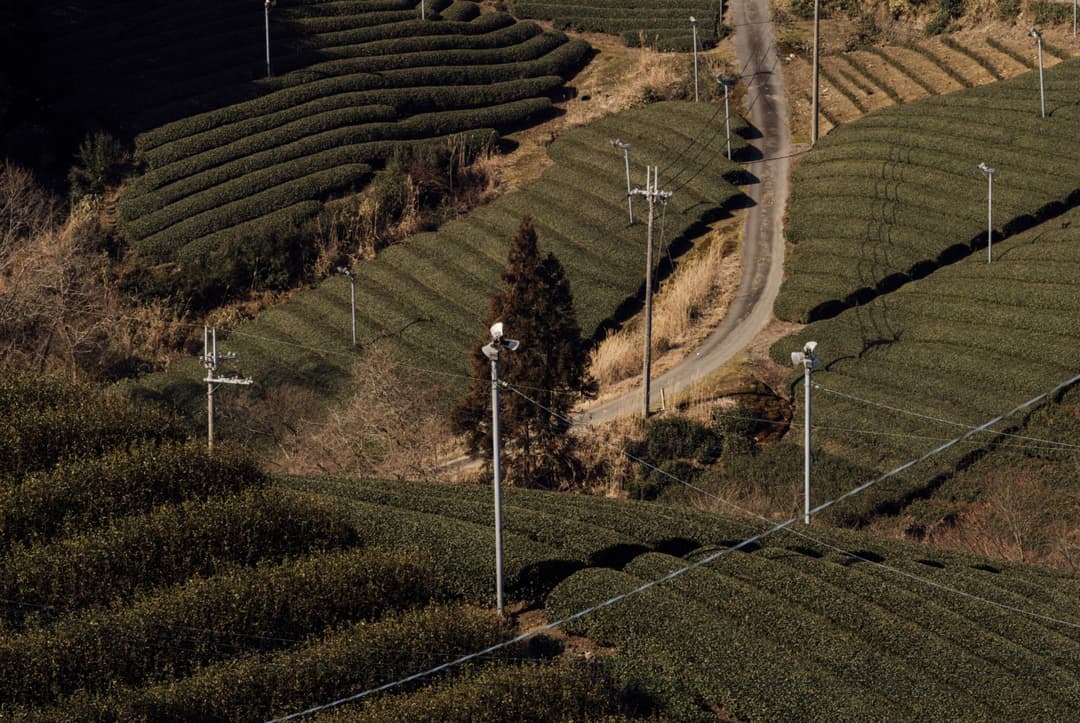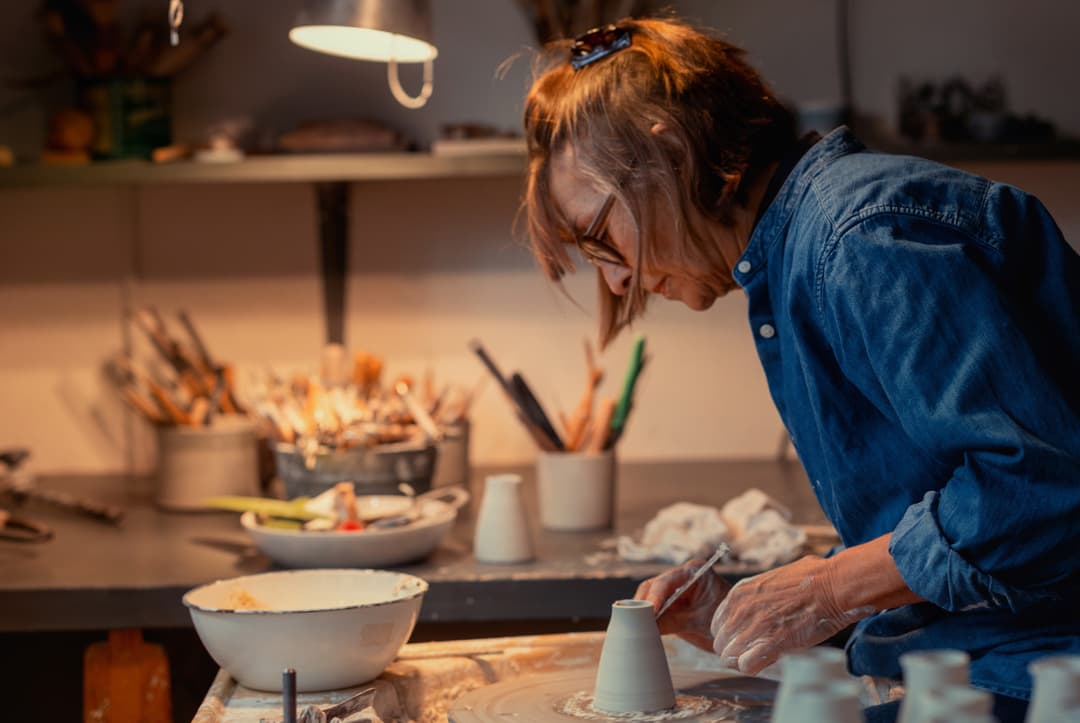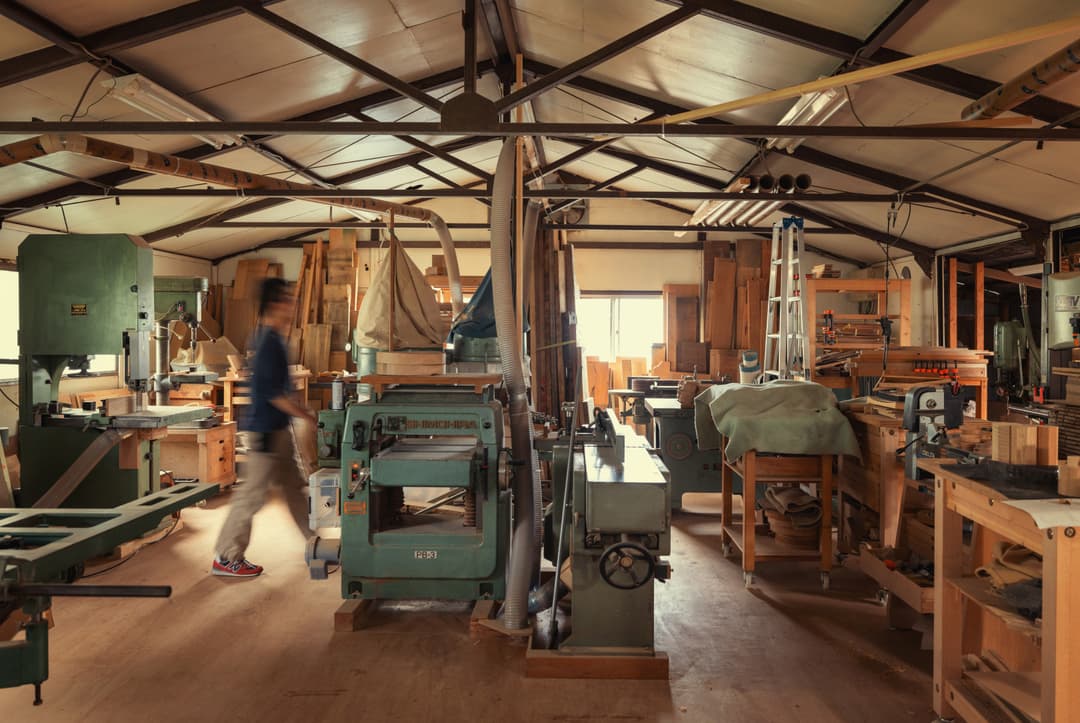
Play Movie
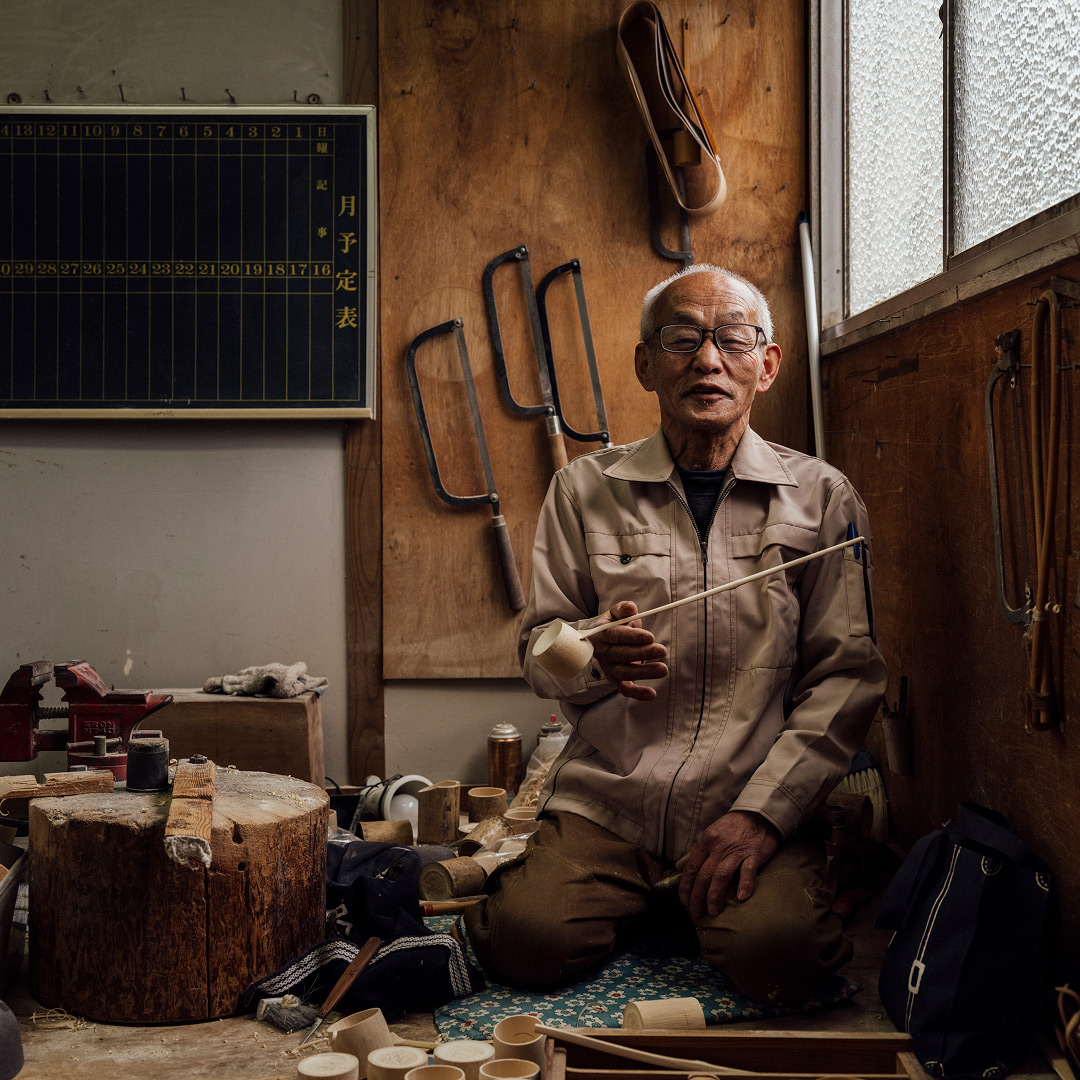
Listen
to Katherine Kennard
reading this story
TOOLS OF TEA
Last Of The Bamboo Masters
We find ourselves at the edge of a bamboo forest in Takayama, Nara Prefecture – the historic and sole centre of artisanal chasen (tea whisk) production in Japan. Our path skirts a dense grove, where bamboo rises in slender columns, pale green and silvered with light. The trunks sway slowly in the crisp spring air, their narrow leaves catching the sun in quick flashes as they whisper and creak against one another. The scent is cool and faintly sweet, tinged with damp earth and fresh growth. Takayama’s forests hold more than 50 species of bamboo and, with them, an entire way of thinking.
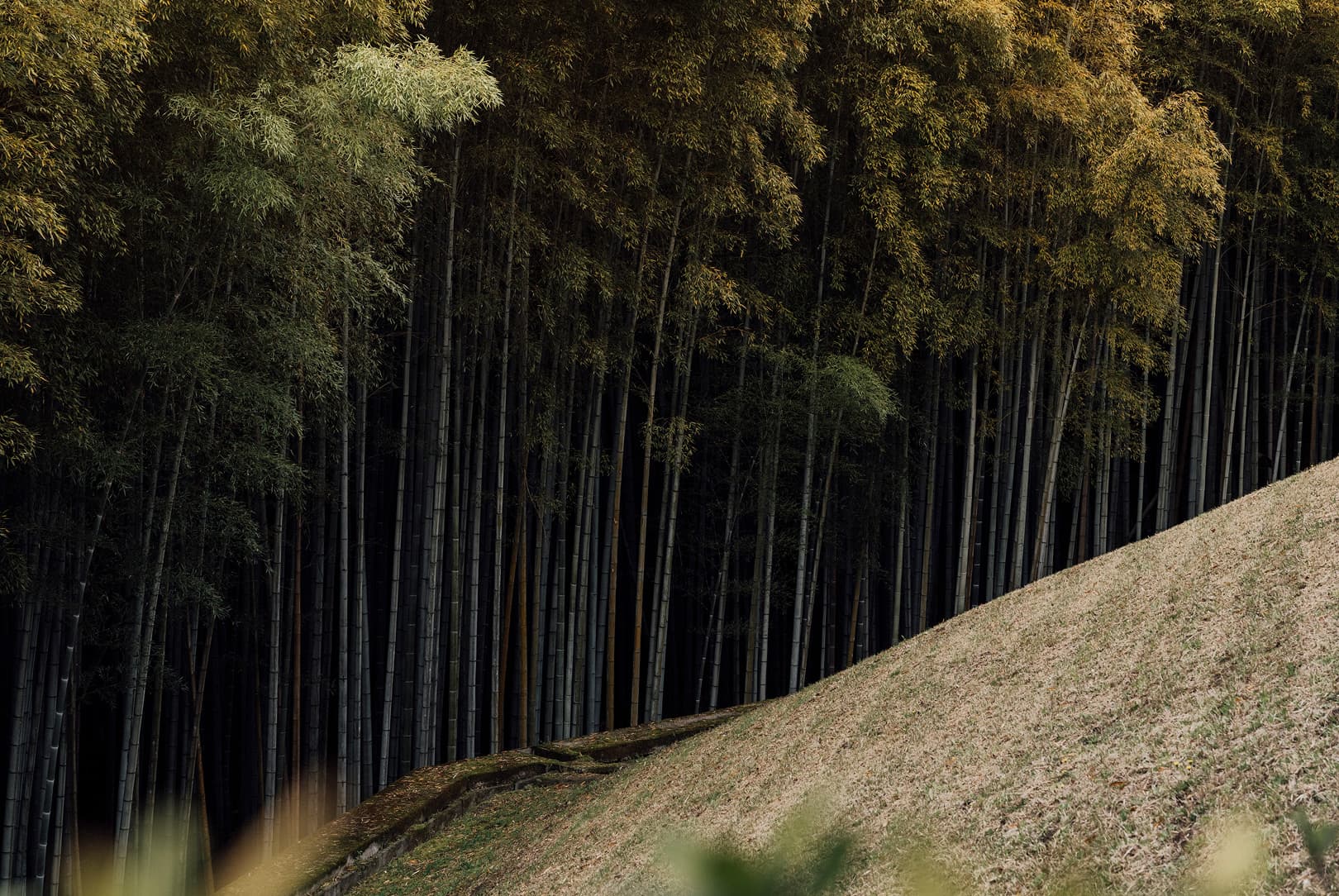
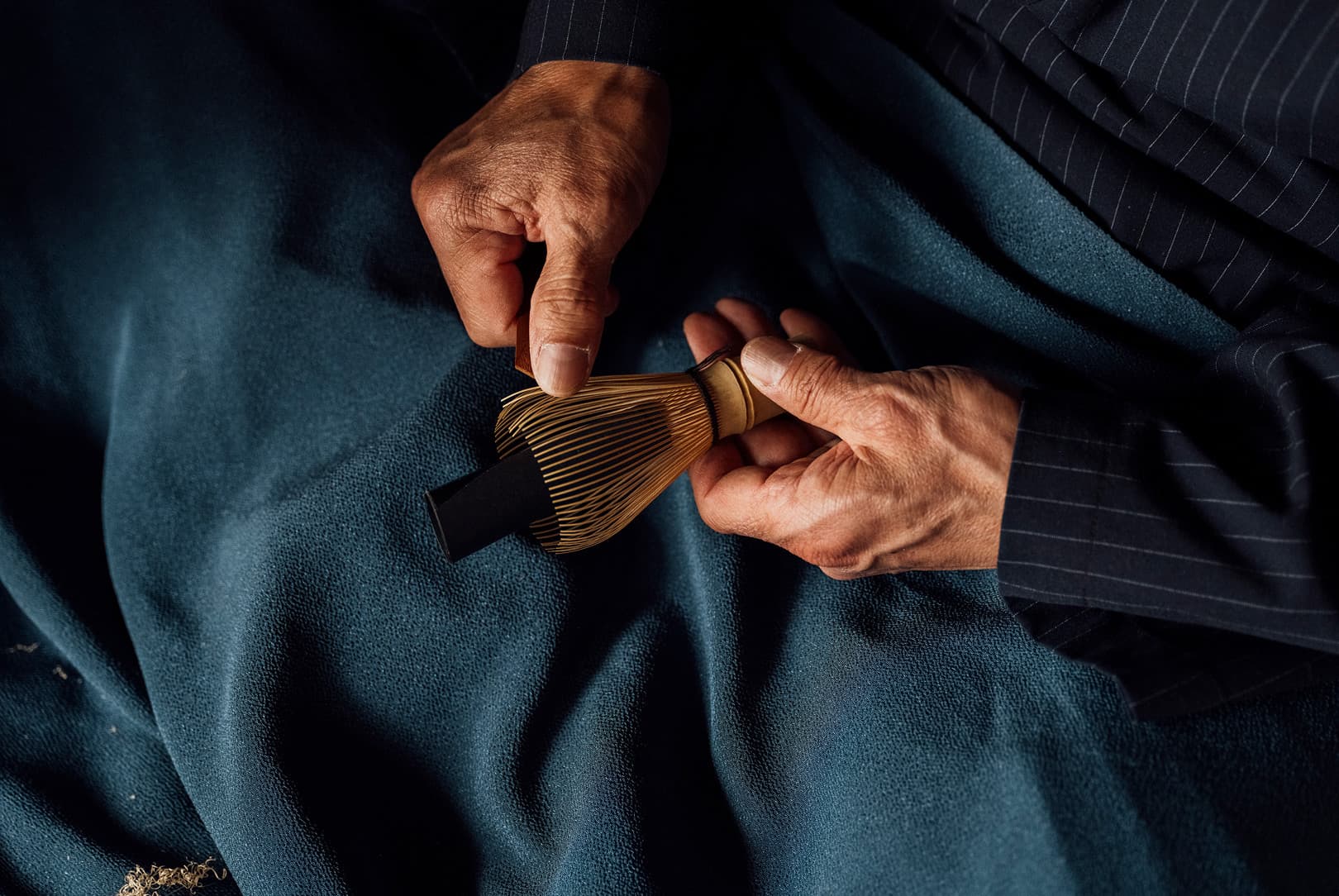
Bamboo grows in deliberate stages, its strength concentrated at each joint it passes through. In Japan, bamboo has long been seen as a model for how to live: to hold firm, yet adapt; to support others while needing little; to grow in rhythm with the world around you. Even the underground rhizomes, hidden from view, reflect a quiet interdependence – a shared root system nourishing the whole. In this forest, we’re reminded that strength can be supple, and that progress often depends on the pauses.
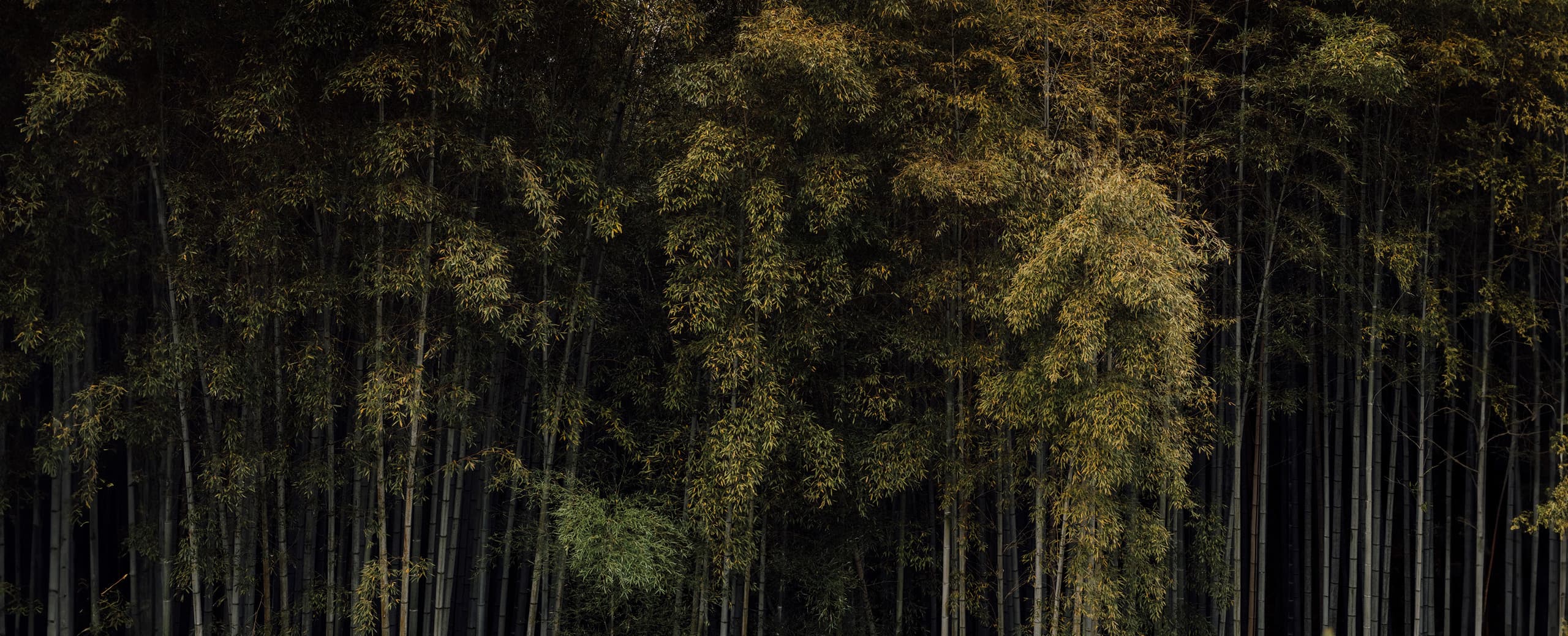
Of the hundreds of bamboo species that grow in Japan, two stand apart for their material qualities: ‘madake’ and ‘hachiku’. Hachiku in particular – a species introduced from China and cultivated since the Nara period, is favoured for its density, smooth grain and pale colour. Its growth is slow and steady, with harvesting timed between the second and fifth year, when the fibres are firm and the plant dormant. Each stalk is cut in winter, when insect activity is low and the structure of the bamboo is most stable.
A plant of unusual rhythms, hachiku takes the long view: it flowers just once every 120 years, in mass synchrony, and dies shortly after – an event so rare that it can mark the end of an entire local population. Once cut, the bamboo is dried for months, sometimes years, depending on the intended use. Only then is it taken, in single pieces, to the workshops of the last remaining bamboo artisans in this village, where it will begin its transformation into the precise implements of the Japanese tea ceremony, each shaped in service of matcha.
A plant of unusual rhythms, hachiku bamboo takes the long view: it flowers just once every 120 years, in mass synchrony, and dies shortly after – an event so rare that it can mark the end of an entire local population.
Far beyond the tea house, our collective appetite for matcha shows little sign of abating. Round the world, the powdered green tea once reserved for monks and nobles now rivals coffee in everyday rituals. As new preparations proliferate and its appeal grows across contemporary culture, demand for the powdered tea prized for its vivid hue, clean energy and antioxidant depth has surged, leading to a global shortage.
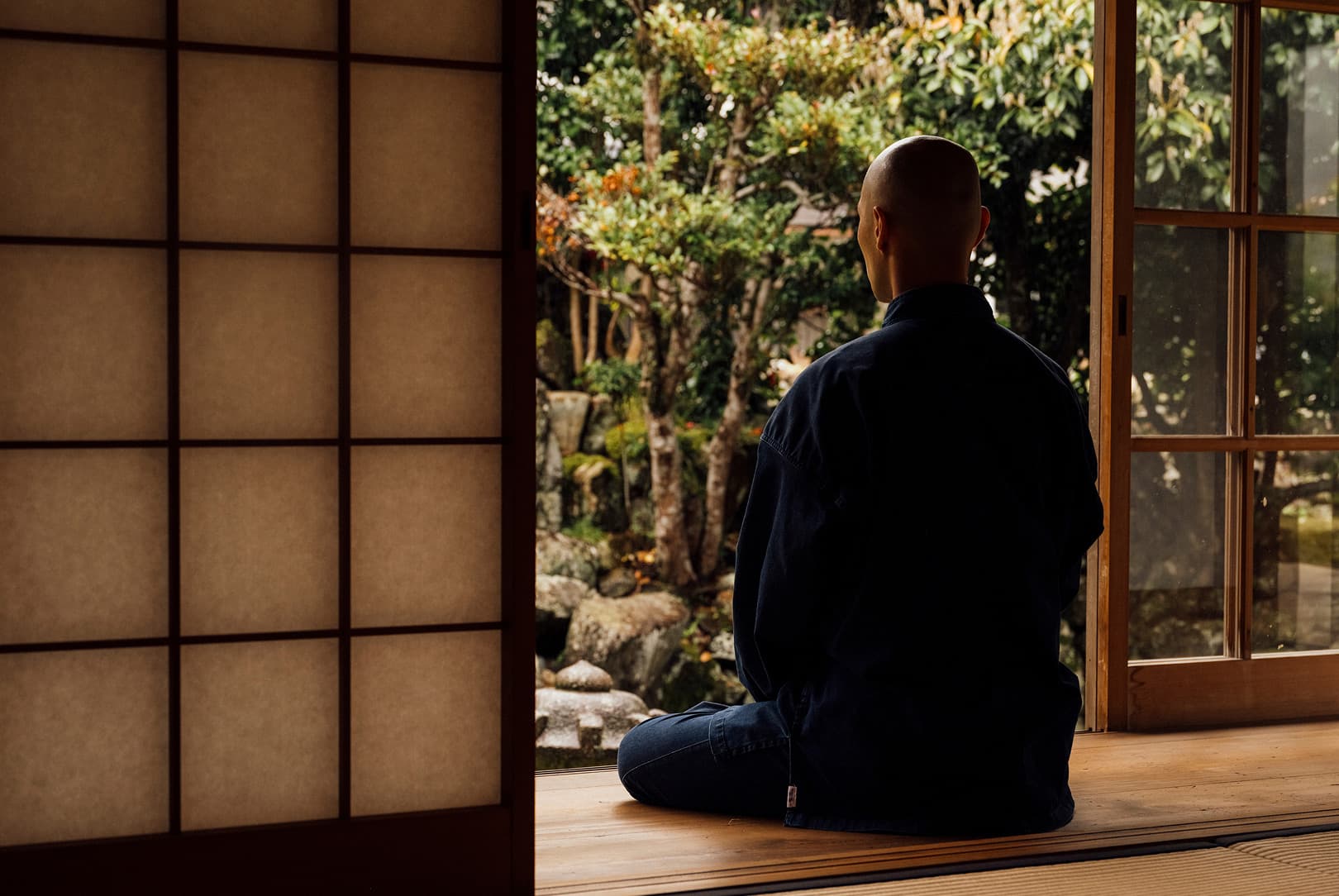
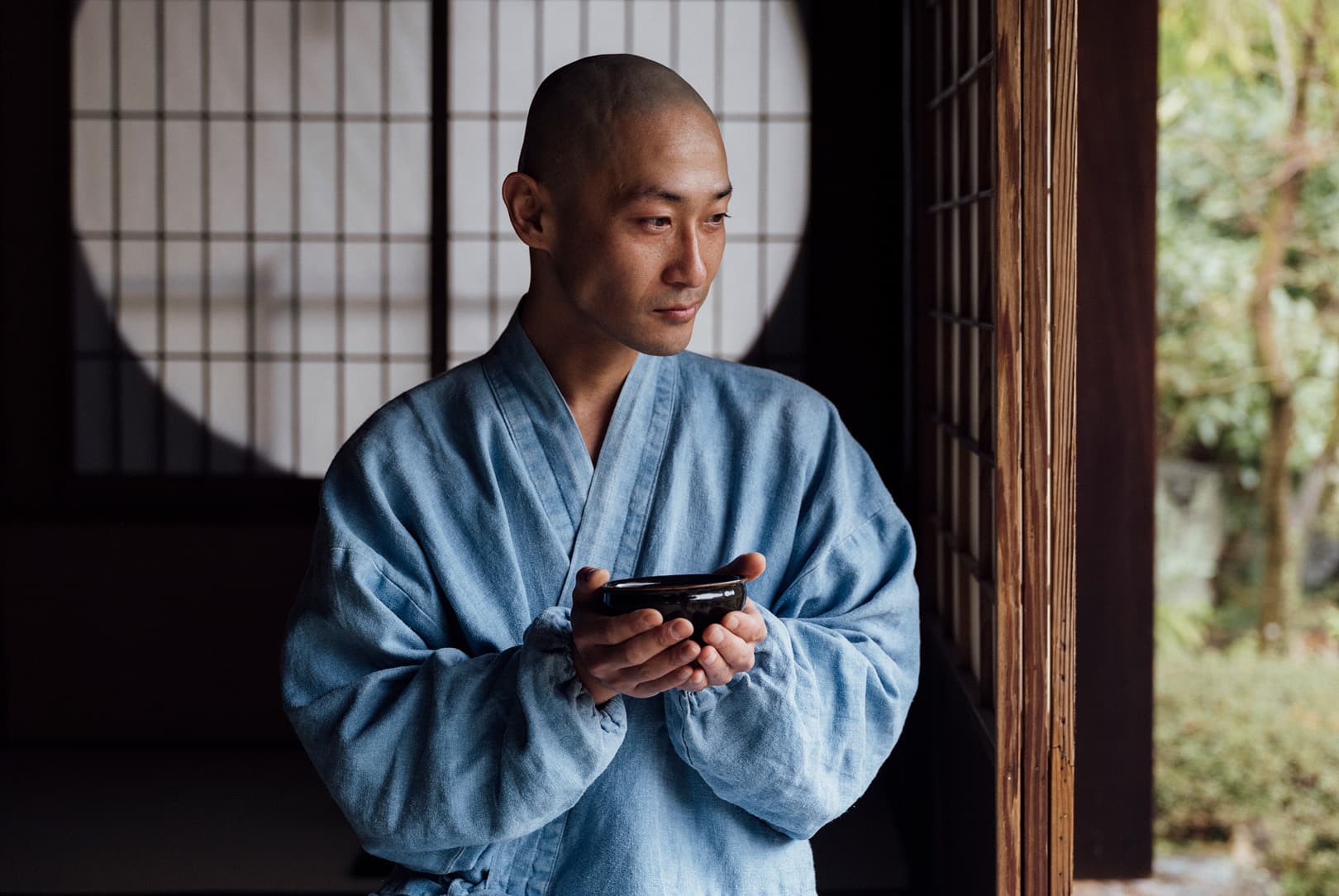
With supply already stretched across Japan’s cultivation fields of Uji, Nishio and beyond, warnings of further strain are mounting. But equally at risk is something less visible: the artisans who craft the bamboo tools essential for matcha preparation, and who are gradually disappearing. It isn’t only the tea that’s under pressure, but the knowledge, materials and manual skills that give matcha its ceremonial form.
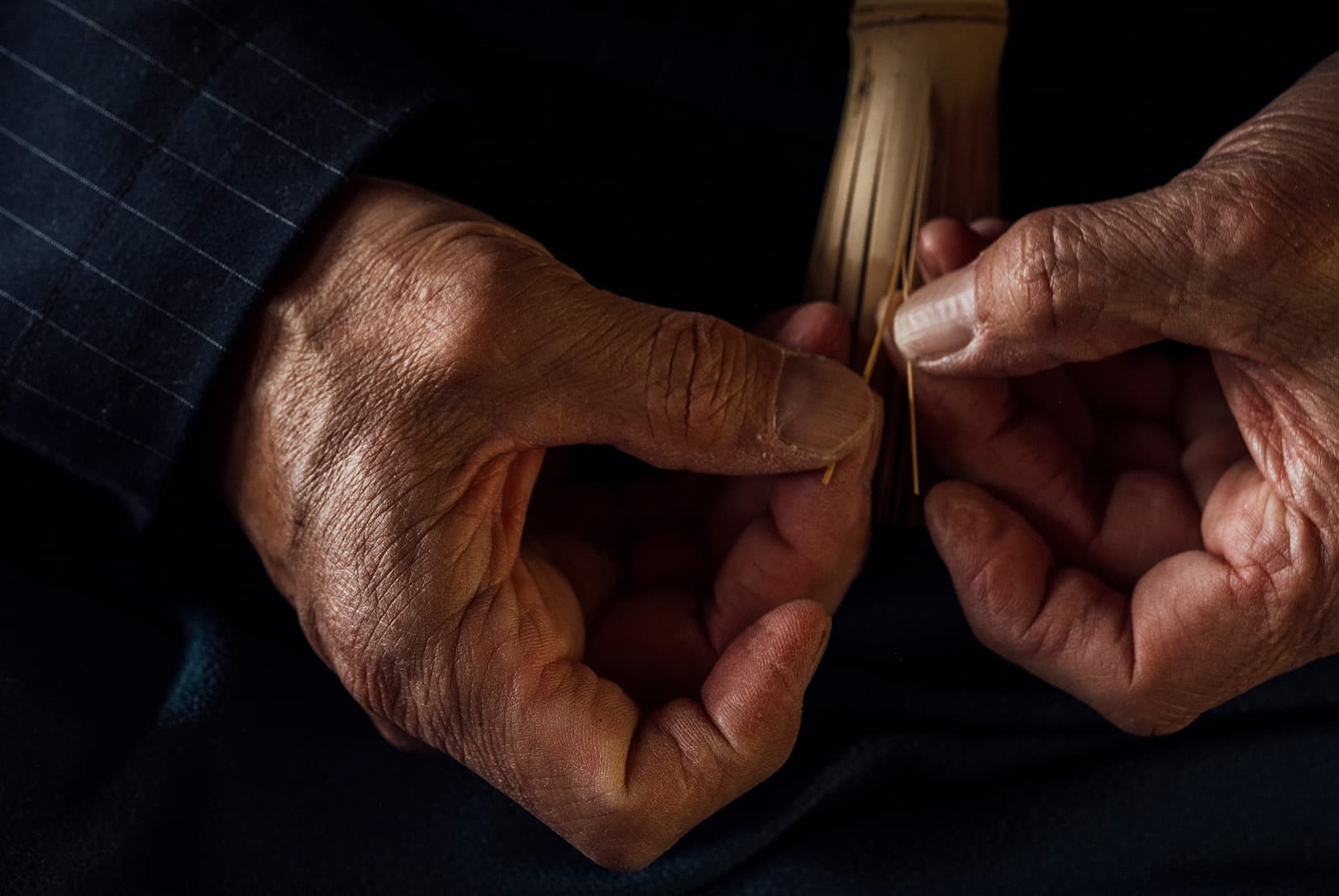
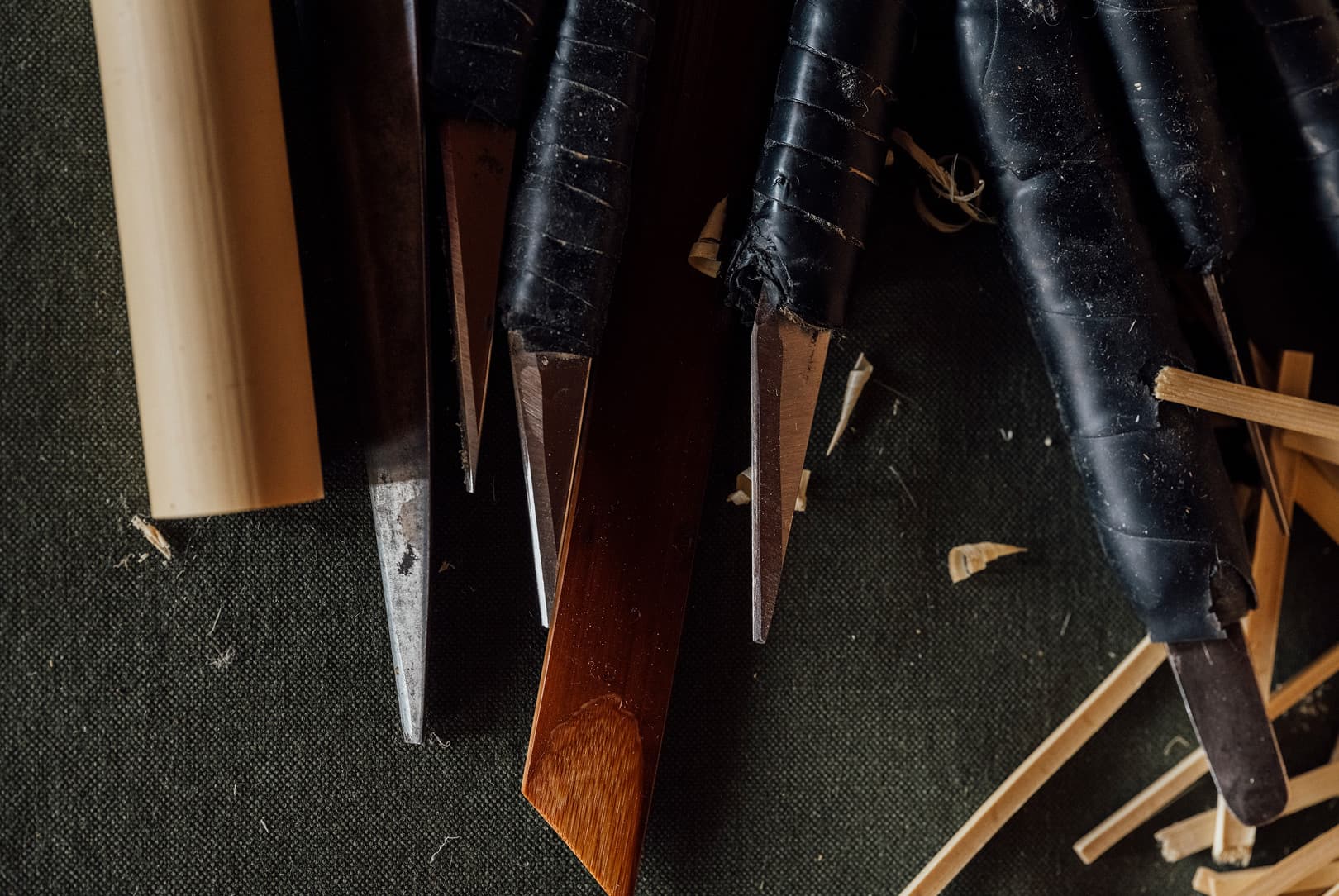
Contemporary iterations of the beverage – swift, ever-evolving, often sugar-laden – are a far cry from its origins. The word matcha itself combines two Japanese terms: ‘matsu’, to rub or grind, and ‘cha’, tea. Unlike steeped teas, where leaves are infused then discarded, matcha is made by suspending finely ground tea powder directly into water – allowing the entire leaf to be taken in with each sip.
This form of preparation was first introduced to Japan in the 12th century by the Zen monk Eisai, who brought tea seeds and powdered tea practices from China. Grown and consumed in Buddhist temples, matcha became a tool for meditation, revered for its sharpening of focus and deepening of presence.
By the 16th century, the preparation of matcha had evolved into ‘chanoyu’ – the Japanese tea ceremony – refined under the influence of tea master Sen no Rikyū. Also known as ‘chadō’ or ‘sadō’, meaning “the way of tea”, it extended to a larger philosophy of imperfection, humility and restraint, grounded in Zen Buddhism. Every element – the choice of bowl, the posture, the whisking technique – is deliberate.
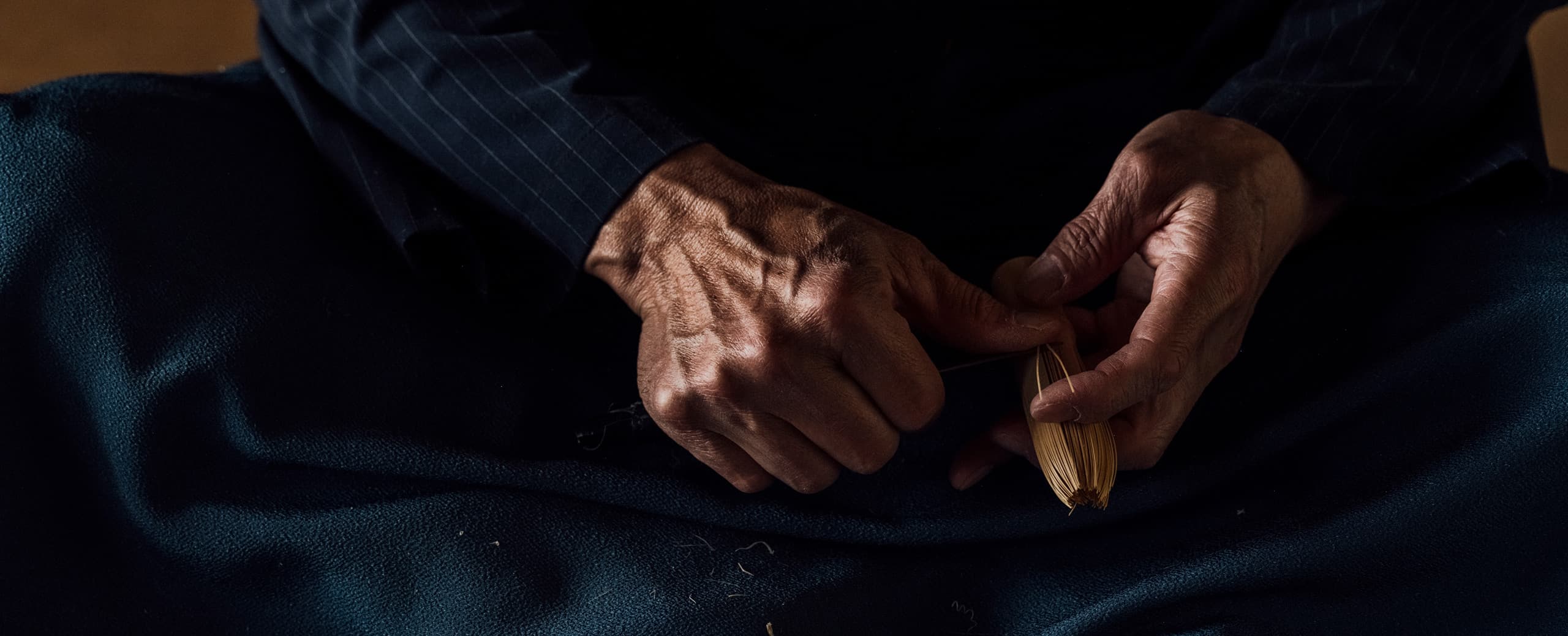
This act of preparing and serving matcha, known as ‘temae’, depends on a refined set of bamboo utensils collectively referred to as ‘dōgu’. Each has a specific purpose and is handled with precision, expressing the values of ‘wa’, ‘kei’, ‘sei’, ‘jaku’ – harmony, respect, purity and tranquillity.
“The act of preparing and serving matcha, known as ‘temae’, depends on a refined set of bamboo utensils collectively referred to as ‘dōgu’. Each has a specific purpose and is handled with precision, expressing the values of ‘wa’, ‘kei’, ‘sei’, ‘jaku’ – harmony, respect, purity and tranquillity.”
The ‘hishaku’ ladle, for instance, is used to draw and pour water with measured grace, its form shifting with the seasons. The ‘chashaku’ scoop, used to measure the matcha, is wiped with a silk cloth and set down with the curved end facing the guest – a gesture of readiness and respect. The ‘chasen’, or tea whisk, is used to whip the tea into a fine, frothy suspension. The ‘chawan’, or tea bowl, is cradled in both hands when offered, and received in the same way – an act that dissolves hierarchy, placing host and guest on equal footing.
These tools are among those central to chanoyu. Each informs the structure of temae, and each carries a long history of its own. For centuries, bamboo whisks, scoops and containers were crafted by hand using specialised techniques passed down through generations. Some artisans were appointed by the Shogun, their methods closely safeguarded and refined over lifetimes of disciplined work.
Today, that lineage is facing decline. As demand for matcha continues to soar, many of these tools are now mass produced, often outside Japan, compromising the craftsmanship and cultural knowledge embedded in each piece. Only a handful of artisans still craft them using traditional methods that require patience and skill. The number of families with this expertise continues to dwindle. With few successors ready to sustain their legacy, an essential thread of the tea ceremony is beginning to fray.
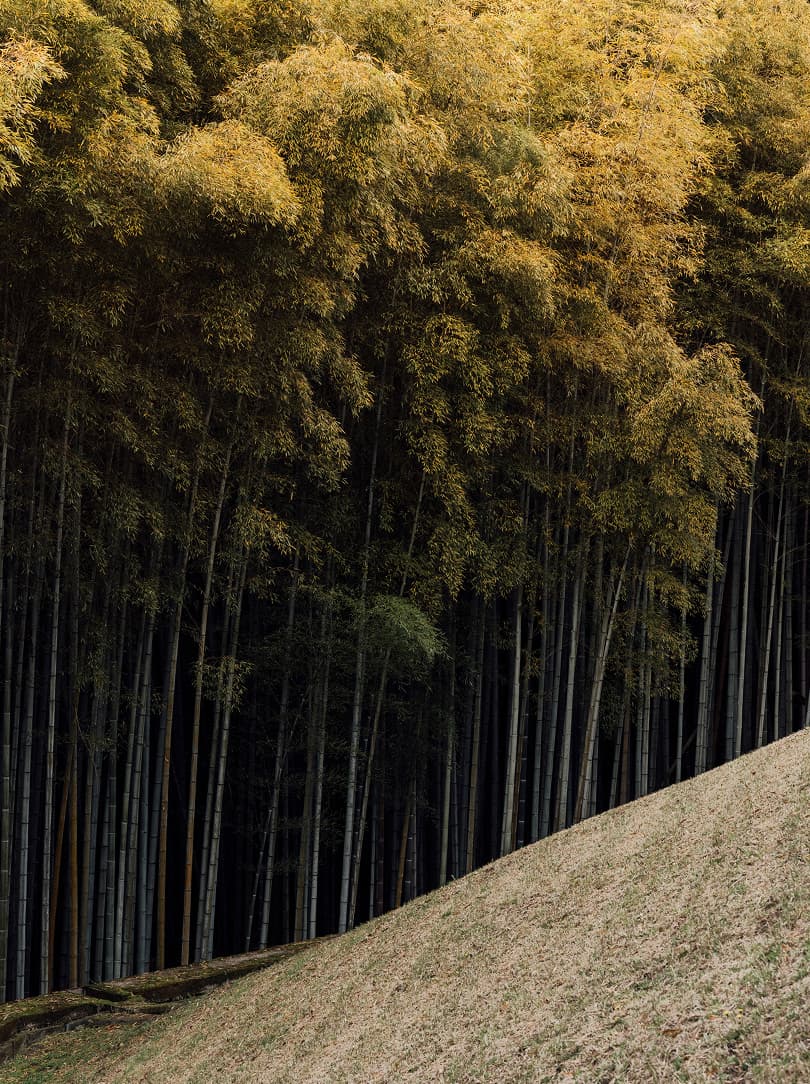
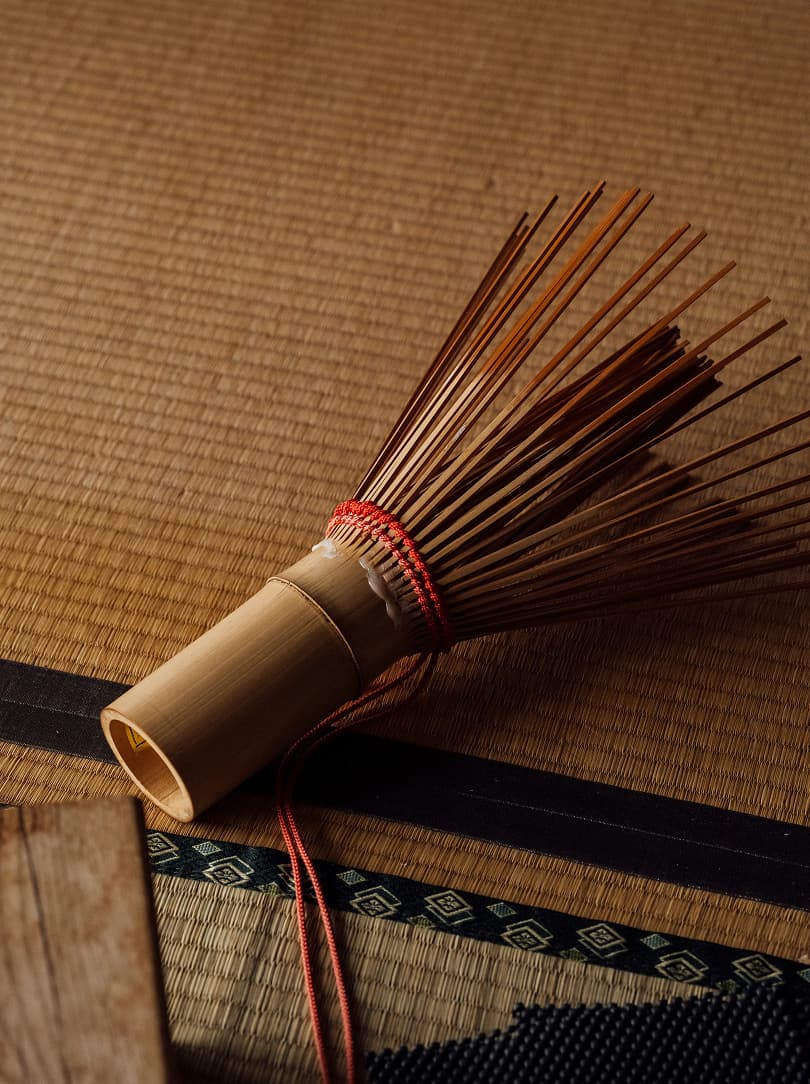
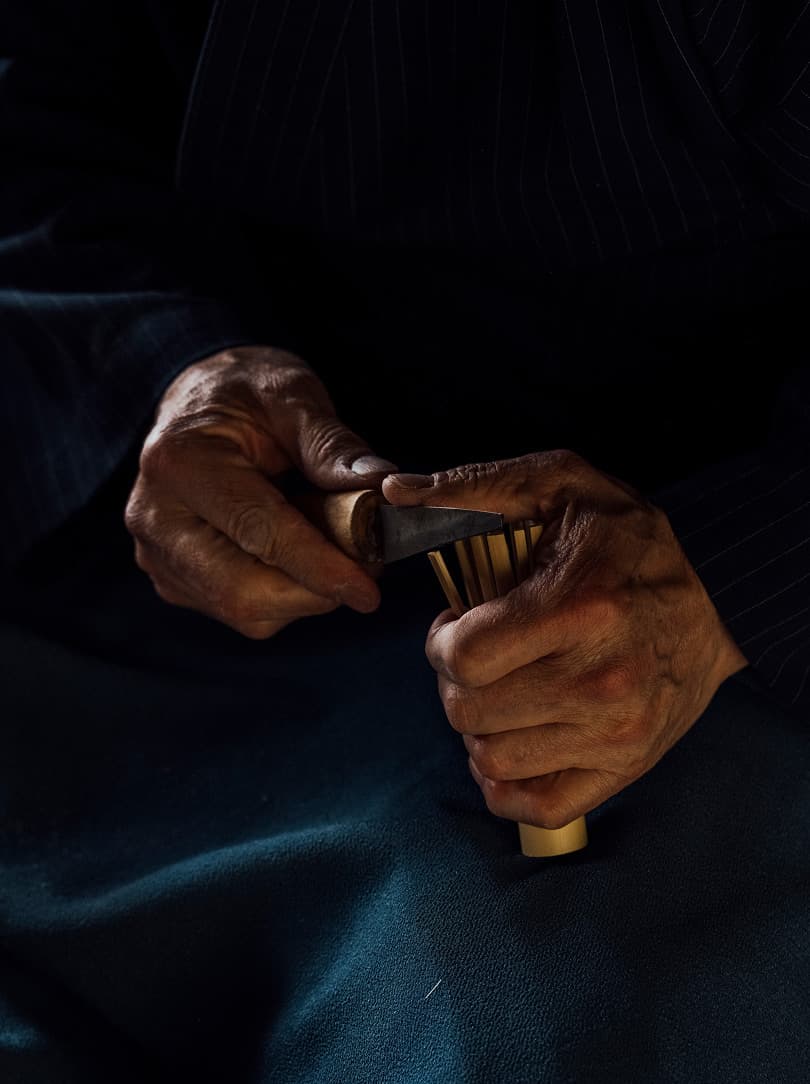
Ceremonial matcha relies on more than powdered tea and water. It depends on a chain of human knowledge, skill and care: from growers to craftspeople, hosts to guests. Break that chain, and the tea risks becoming a product unmoored from its practice. The question remains: what stands to be lost?
“Ceremonial matcha relies on more than powdered tea and water. It depends on a chain of human expertise and care: from growers to craftspeople, hosts to guests. Break that chain, and the tea risks becoming a product unmoored from its practice. The question remains: what stands to be lost?”
Our exploration of this reflection leads us to the workshop of a ‘chasen-shi’ – ‘shi’ denoting a master of craft – a hillside away from Takayama’s bamboo forest. Light sharpens against the rooftops as we leave the grove behind and make our way along the mountain slope, birds calling overhead, the crystalline air edged with the scent of dry grass.

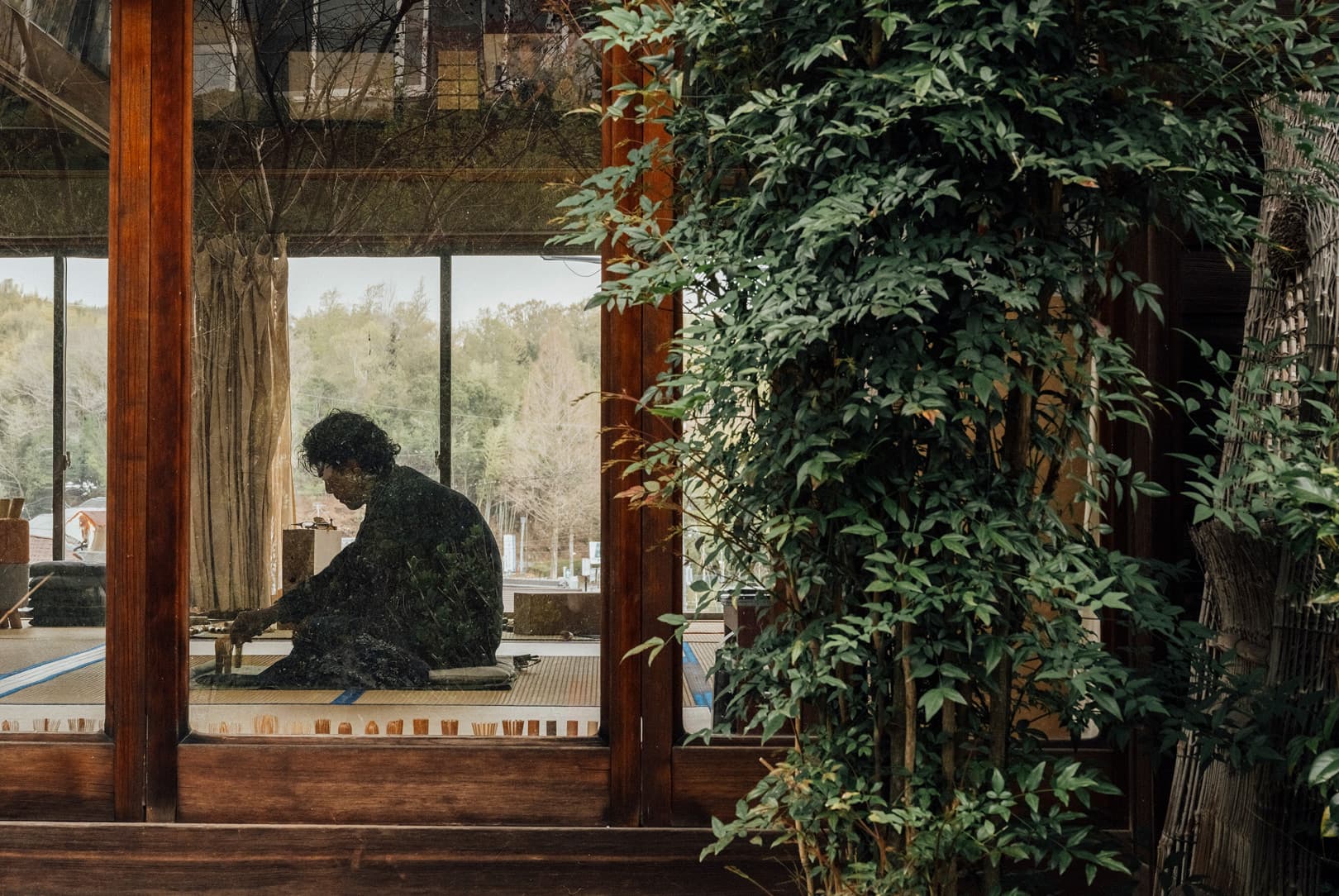
We are here to witness the work of Tango Tanimura, a 20th-generation tea whisk master whose family has made whisks since the Muromachi period. His ancestors were among the 13 families appointed as ‘Chasen-shi’, or master of chasen, by the first shogun during the Edo period. Today, only three of these families remain in all of Japan.
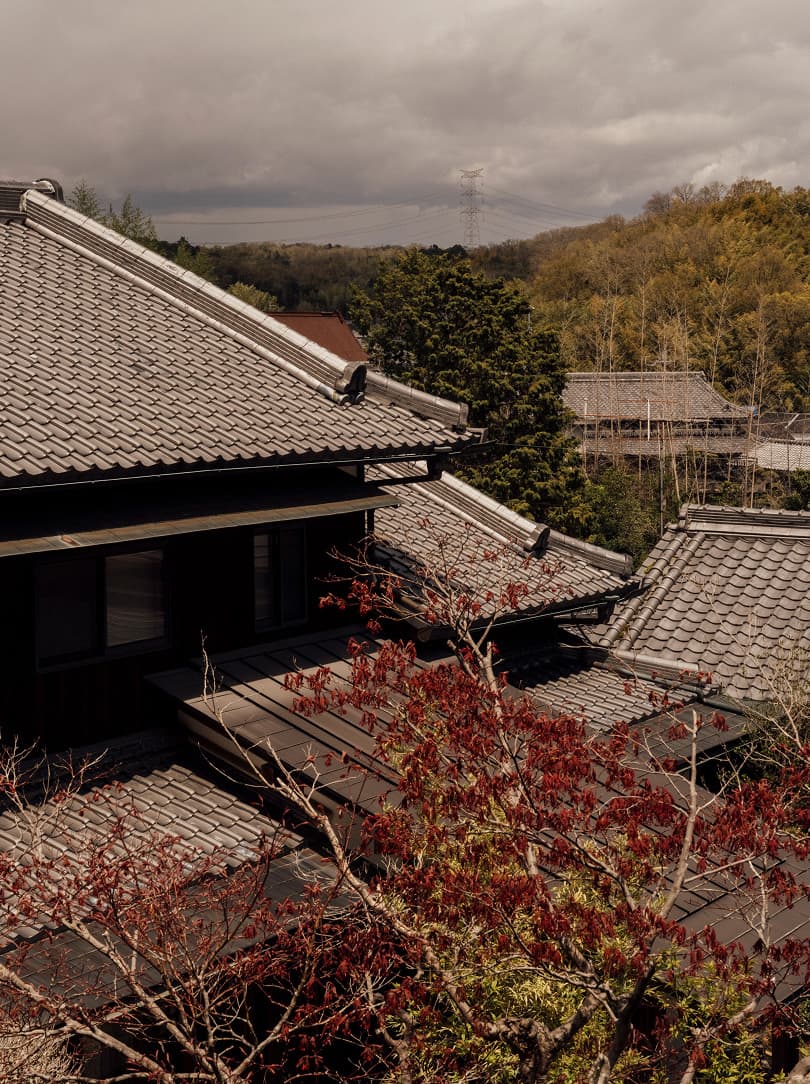
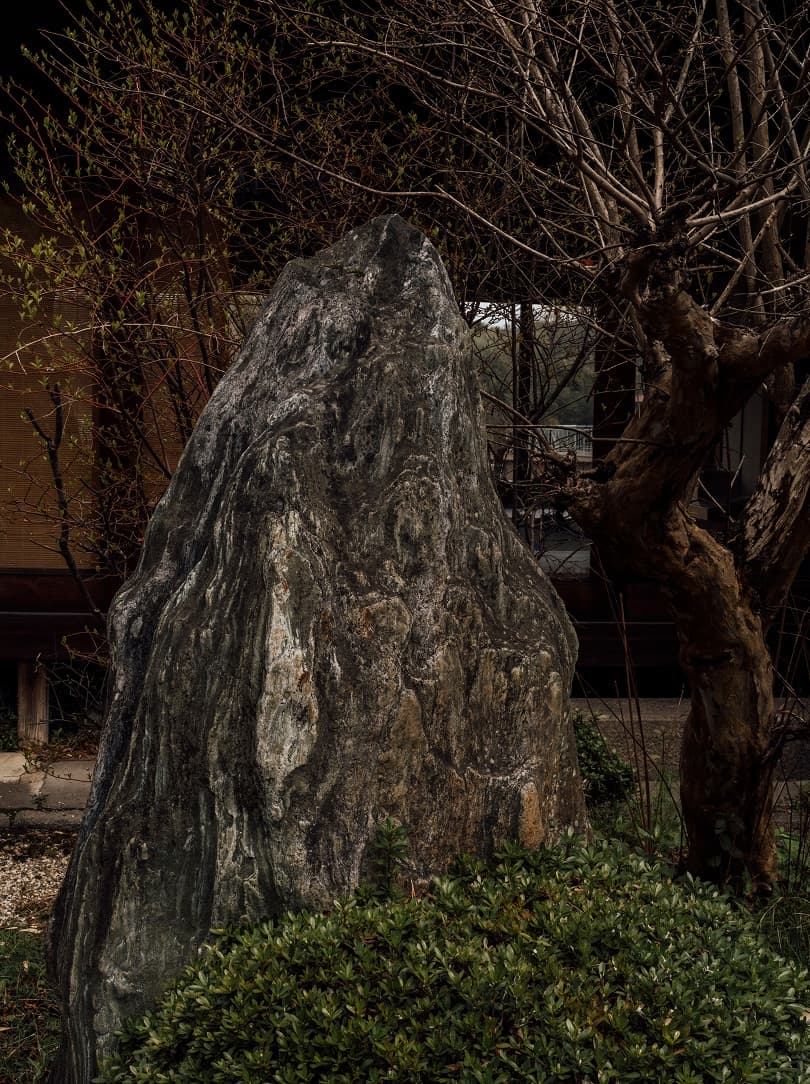
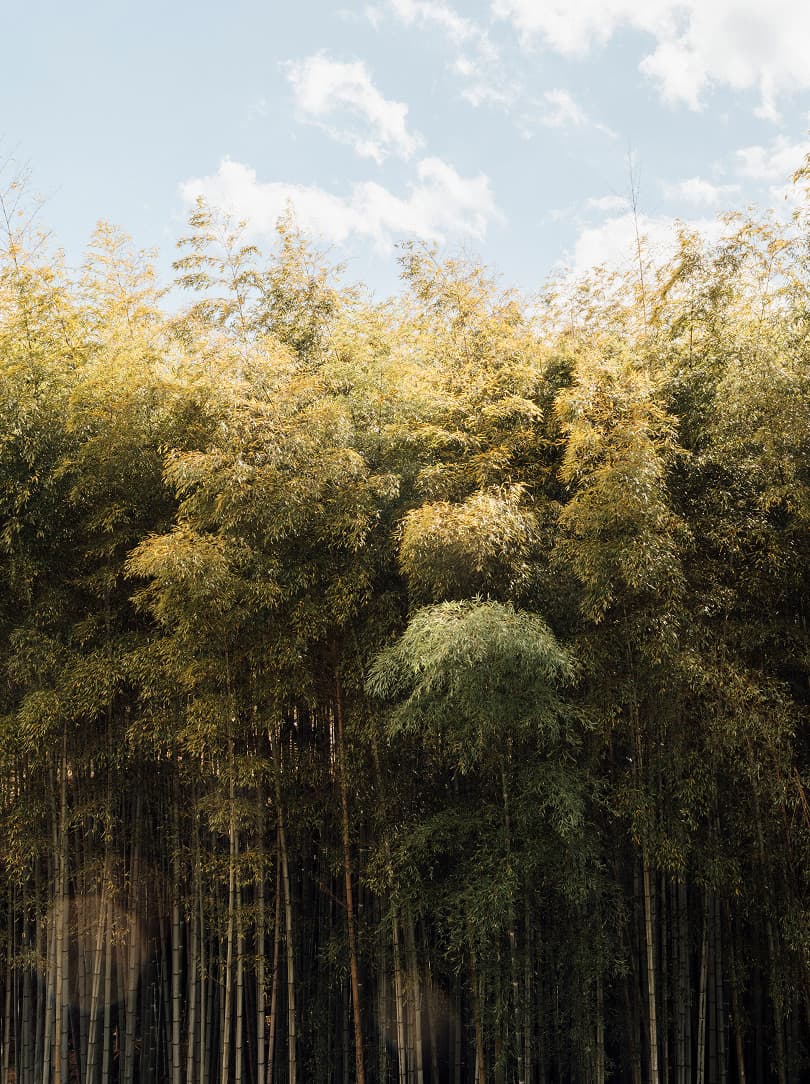
We arrive through a patinated courtyard garden. Moss clings to stone, water murmurs over worn rock, and branches twist toward the light in sculptural arcs. The path leads to a sliding shoji door, its soft panels catching the glow of the morning sun. Hanging across the entrance, a pine-green ‘noren’ is imprinted with a white outline of a chasen, its silhouette gently moving with the breeze. We remove our shoes and step through it, entering the timeworn comfort of Tanimura-san’s workshop.
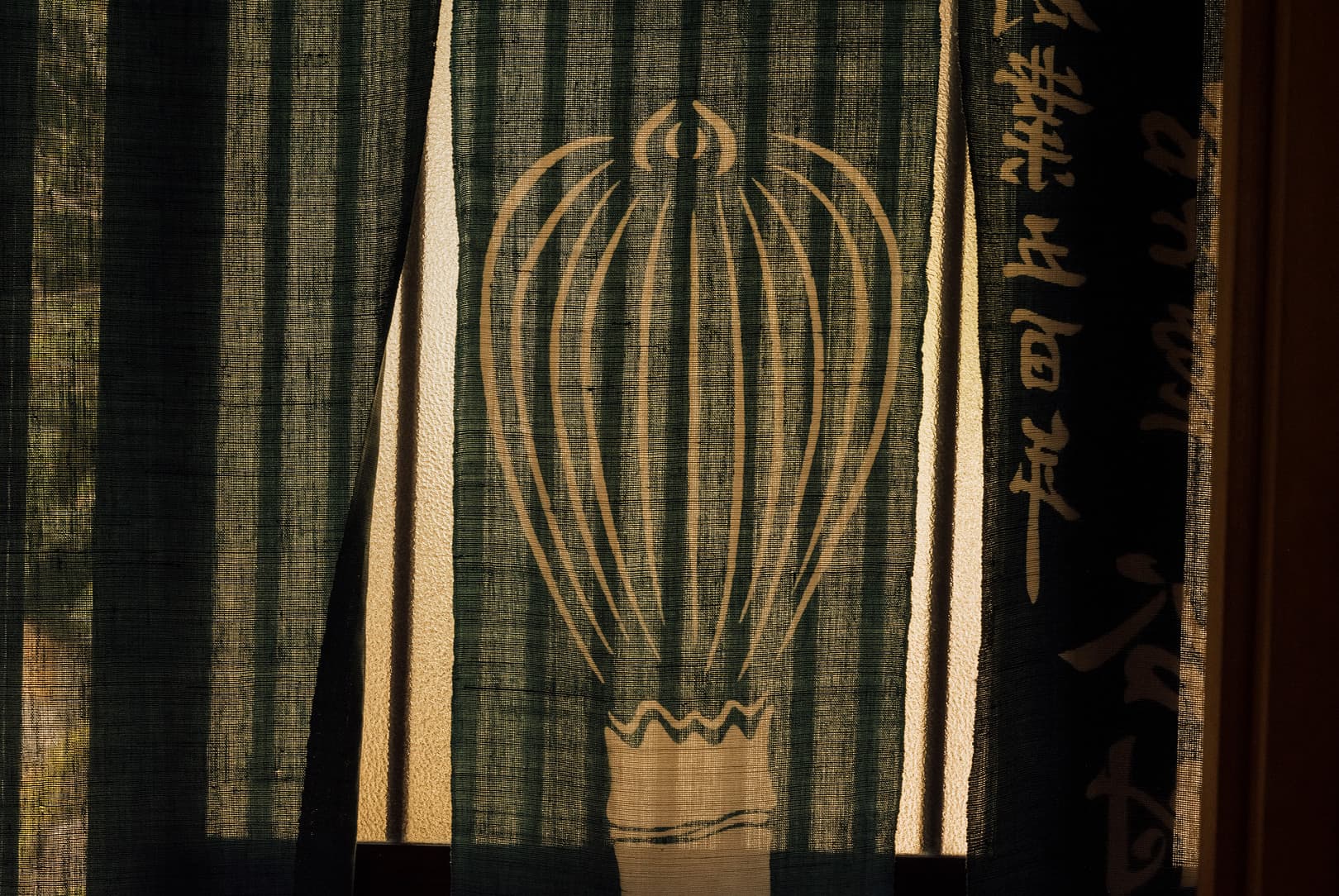
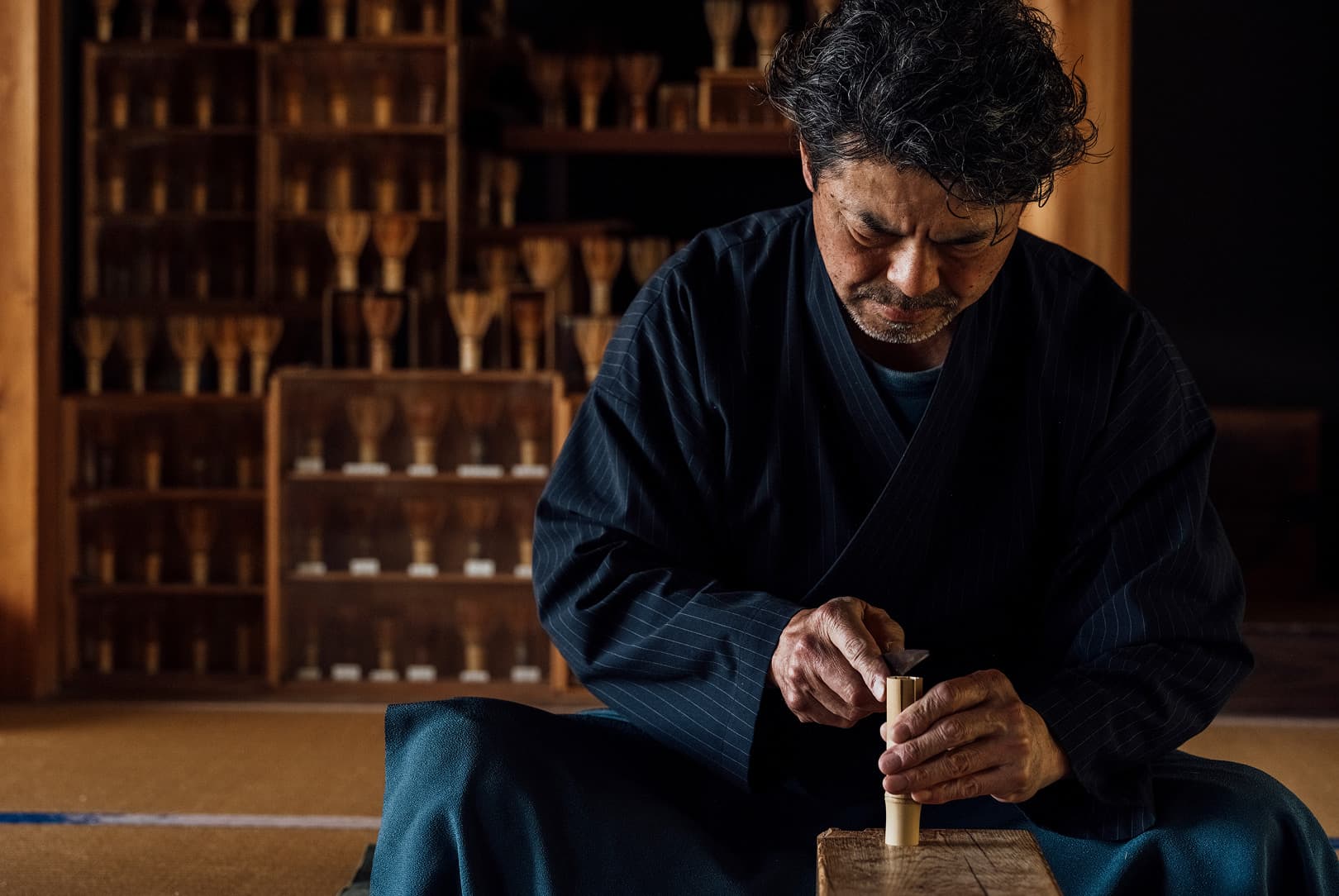
Inside, the room feels both orderly and alive – tatami underfoot, the scent of warm dust in the air, and shelves thick with whisks in various stages of completion. Worn tools are tucked into corners, wooden boxes reveal rows of finely finished chasen nestled in handmade paper and fine paperboard,, and photographs of the Tanimura family and hands at work line the rafters. At the back of the room, a recessed alcove functions like an altar, featuring chasen of every variety lined up in open-fronted wooden cabinets beneath a large calligraphy panel.
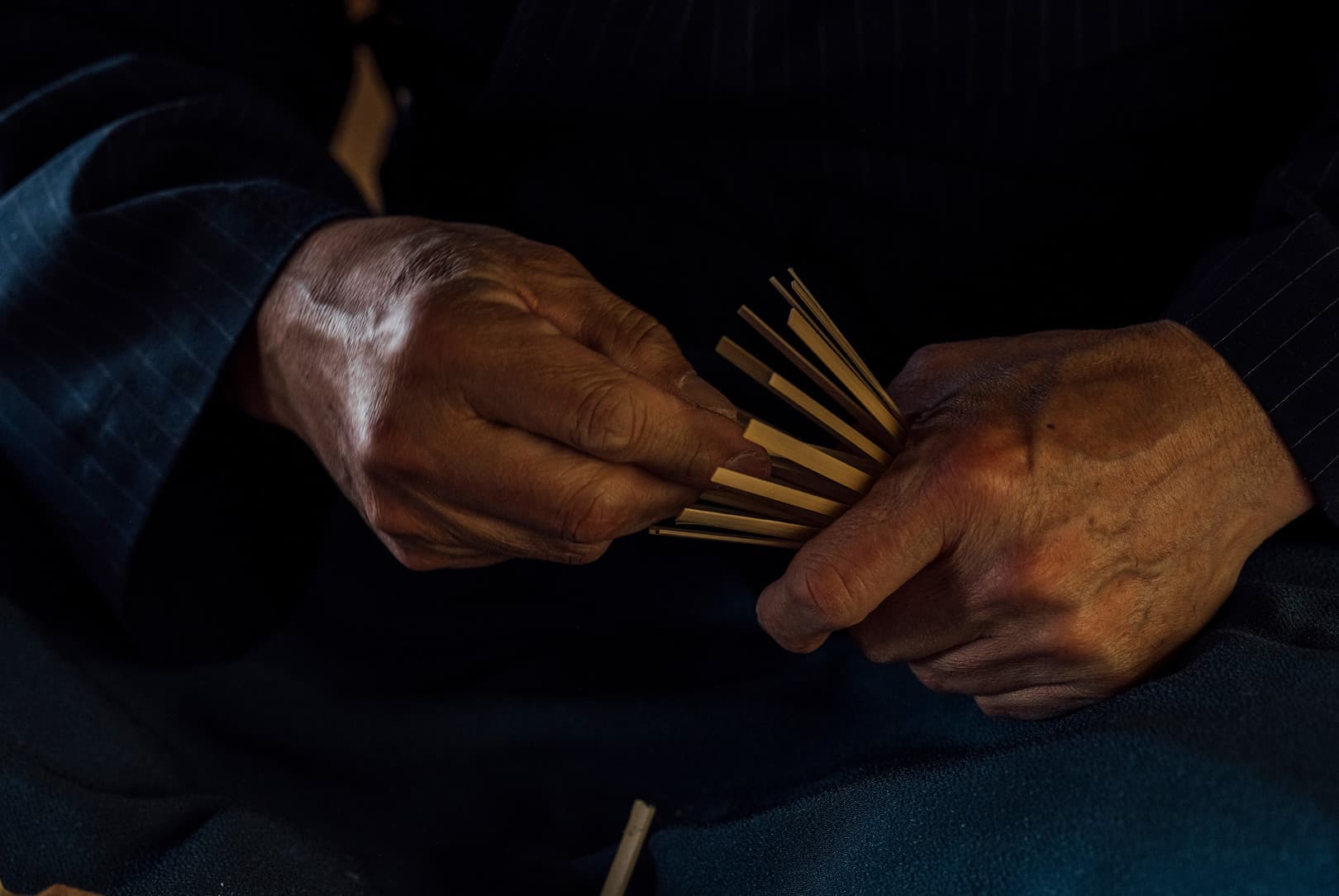
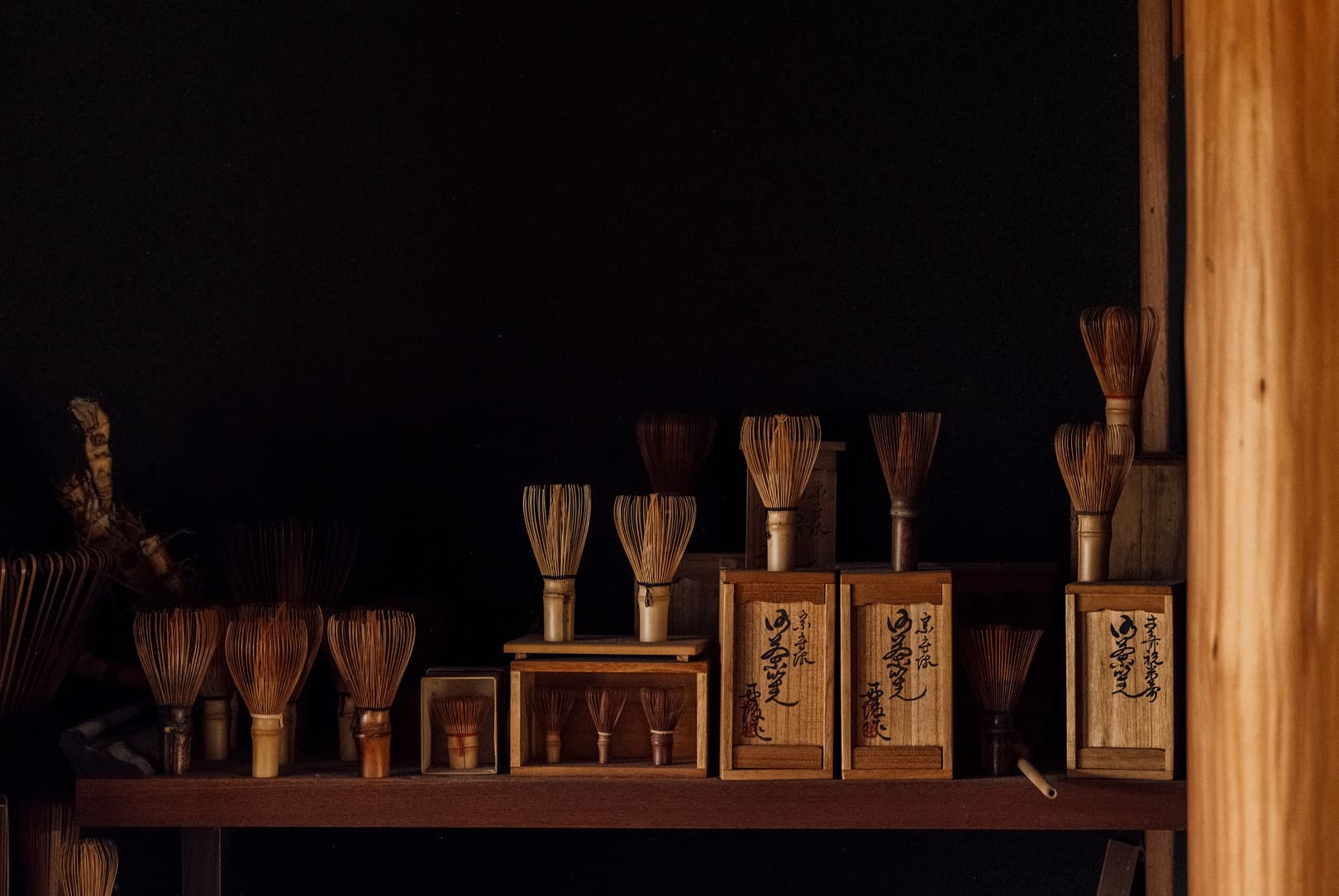
Tanimura-san has an understated gravity to his presence. Dressed in a pinstriped ‘haori’ work jacket and dark indigo jeans, he moves with the ease and efficiency of someone highly attuned to his surroundings. His thick hair is slightly tousled, his eyes clear and steady, with singular intent. His manner carries no ceremony, only a gentle pragmatism. He pours tea into thimble-sized cups without fuss, gestures toward the floor cushions, and invites us to gather round as he prepares to demonstrate the craft to which he has devoted his life.
The chasen begins as a single piece of hachiku bamboo – slender, straight, and dried for three winters. The one Tanimura-san has selected for the chasen he will make today is smooth and pale, with a clean grain and an even taper. He takes his place on a teal blanket on the floor, kneeling behind a sturdy wooden block that serves as his workbench. Focused and steady, he begins the first steps: cutting and peeling.
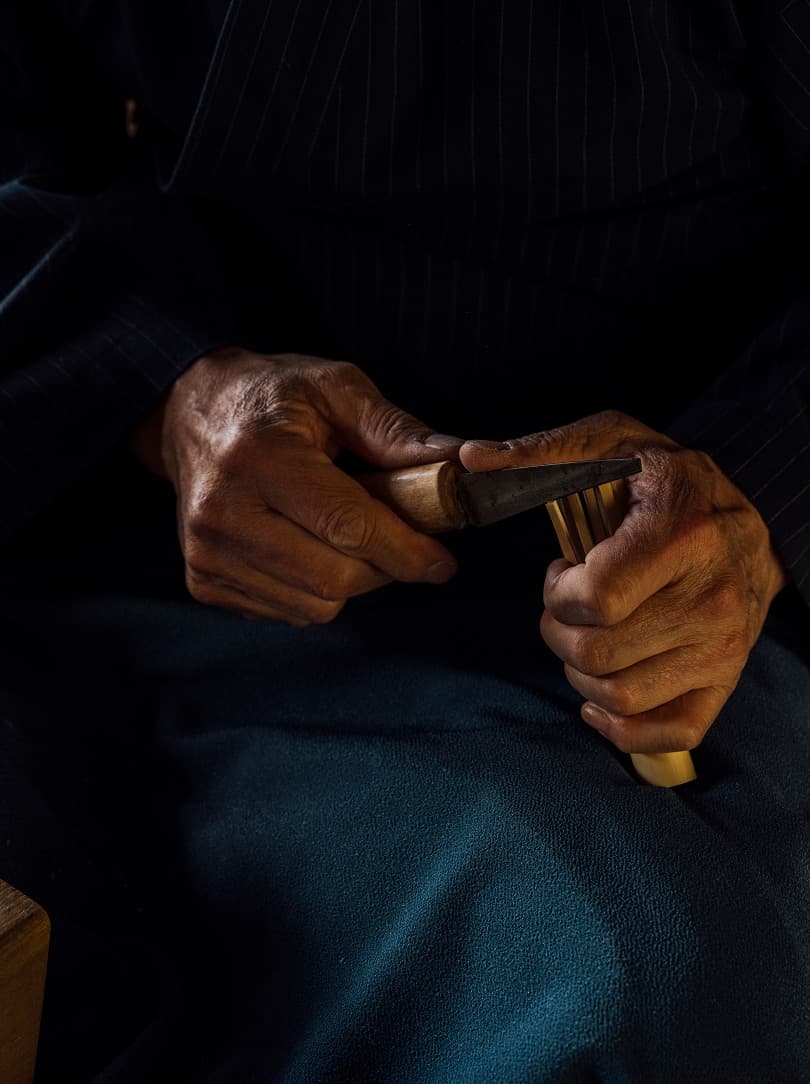
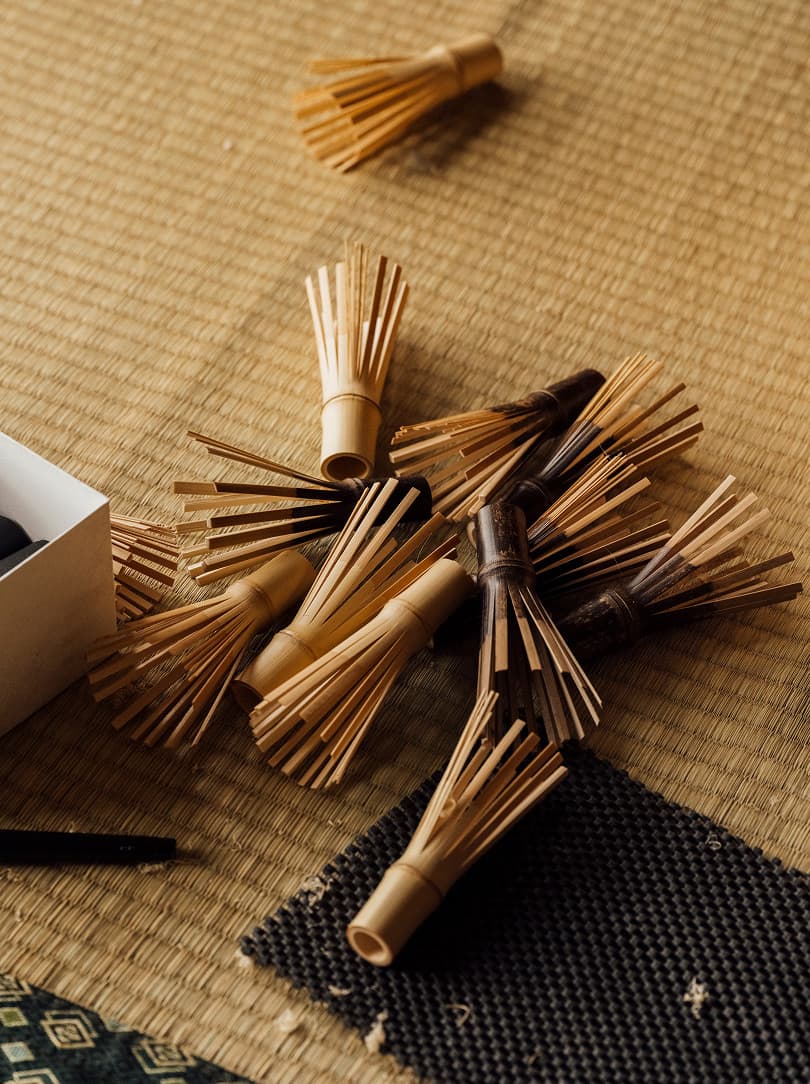
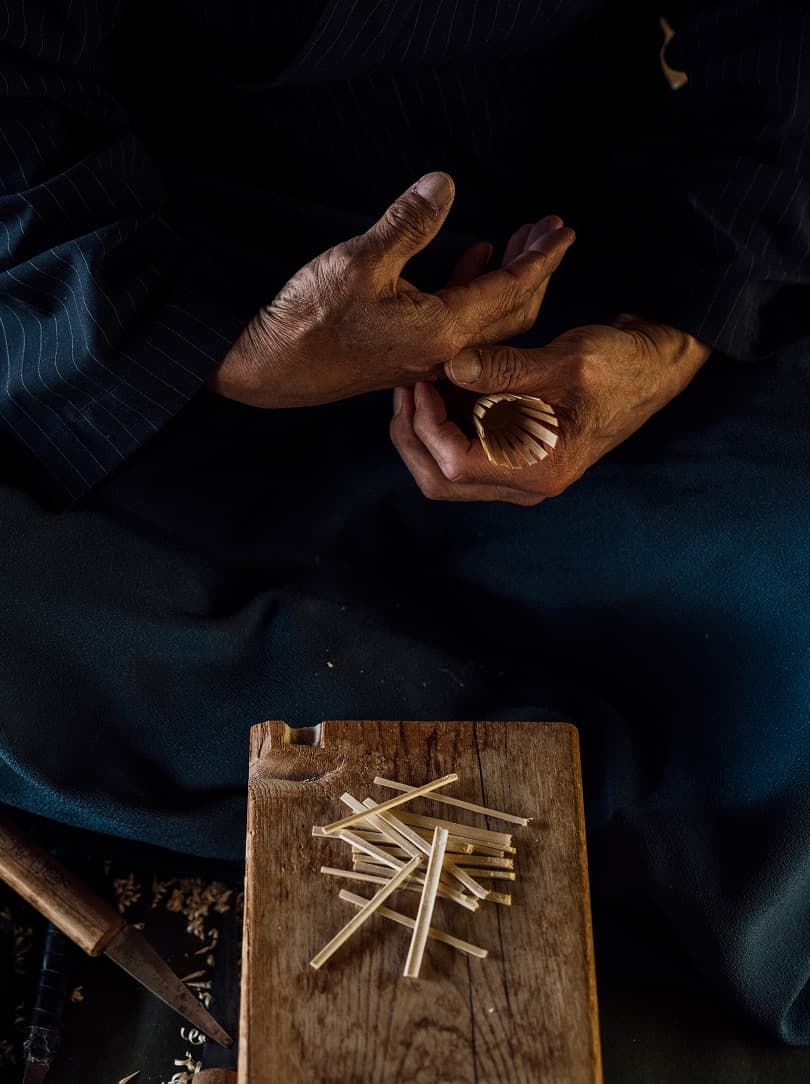
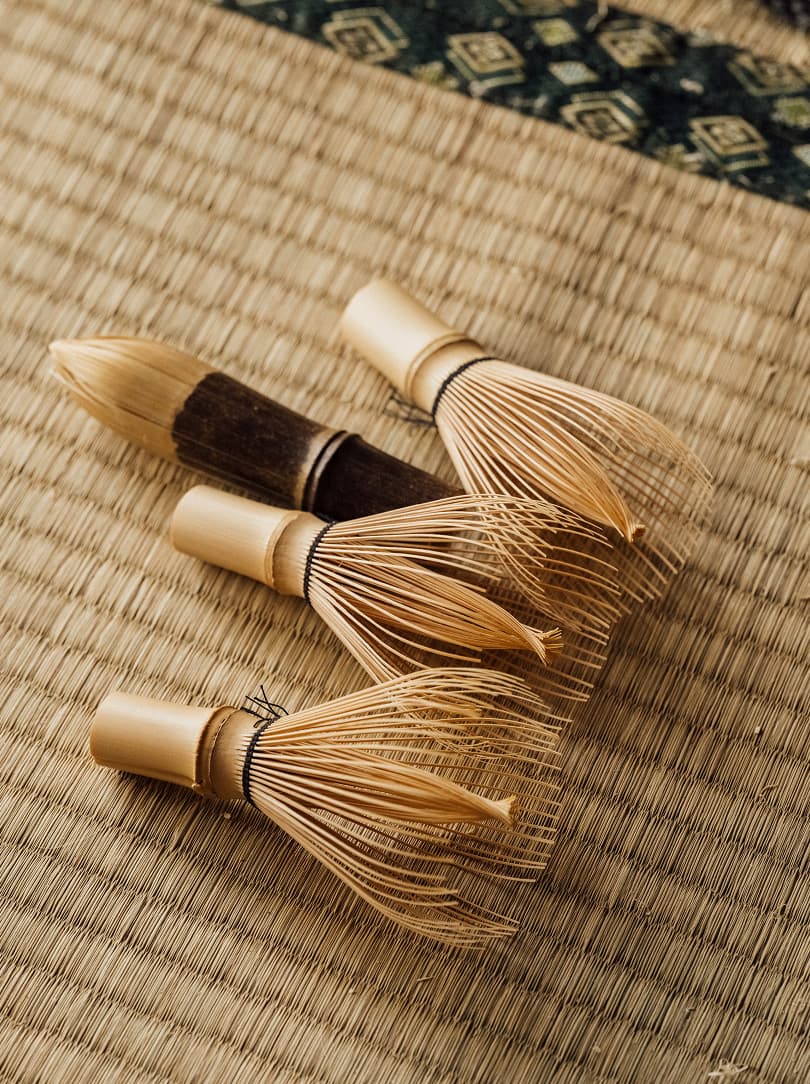
We sit nearby, close enough to observe without disturbing. Protective glasses shield his eyes from sparking splinters. He braces the stalk against the wood, guiding a long knife down its length with measured pressure, shaving back the smooth outer skin until a satiny surface is revealed. Fine curls gather at his sides like shavings from a carpenter’s plane.
“We are here to witness the work of Tango Tanimura, a 20th-generation tea whisk master whose family has made whisks since the Muromachi period. His ancestors were among the 13 families appointed as ‘Chasen-shi’, or master of chasen, by the first shogun during the Edo period. Today, only three of these families remain in all of Japan.”
He continues with the ‘hegi’ stage, splitting the bamboo into 16 equal sections and carving away the soft inner layer, leaving a thin outer skin. With the blade precisely angled, he presses and pulls in small, rhythmic motions, the strips parting one by one with a crisp, fibrous sound. Next is ‘kowari’, a meticulous process in which each strip is divided into alternating thick and thin tines. The movement of his hands is almost meditative, unhurried, eyes close to the work. The precision is entirely manual – unmeasured, done by feel and instinct.
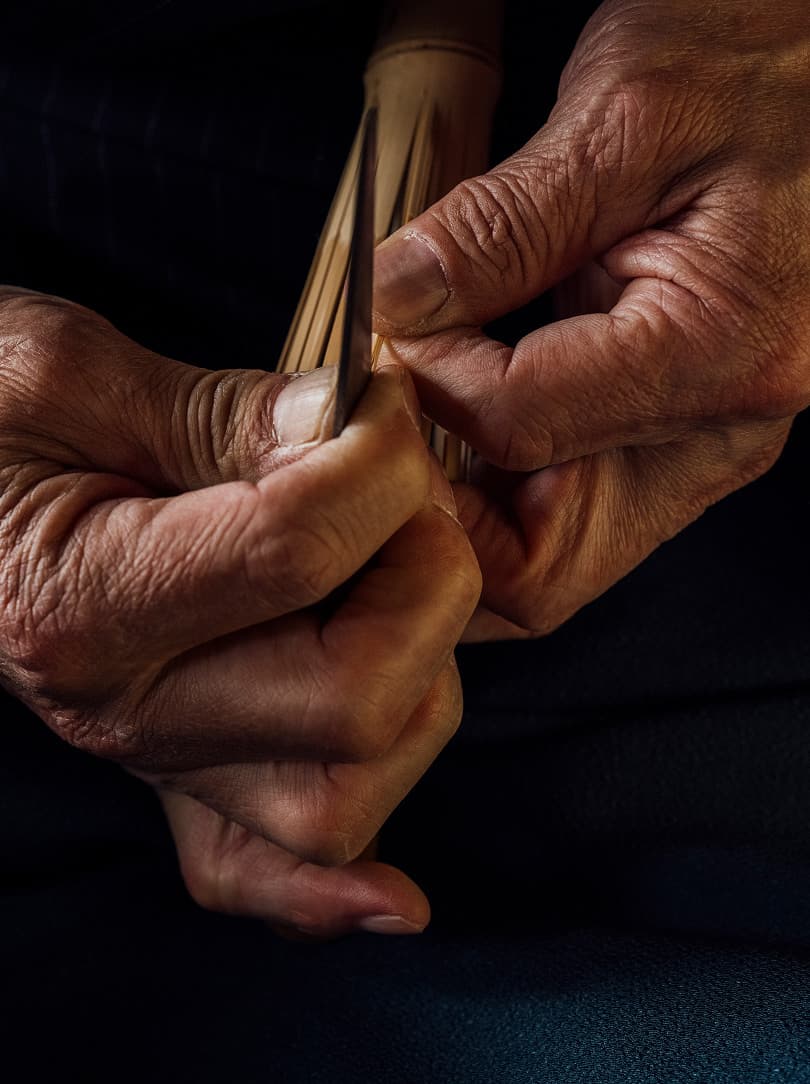
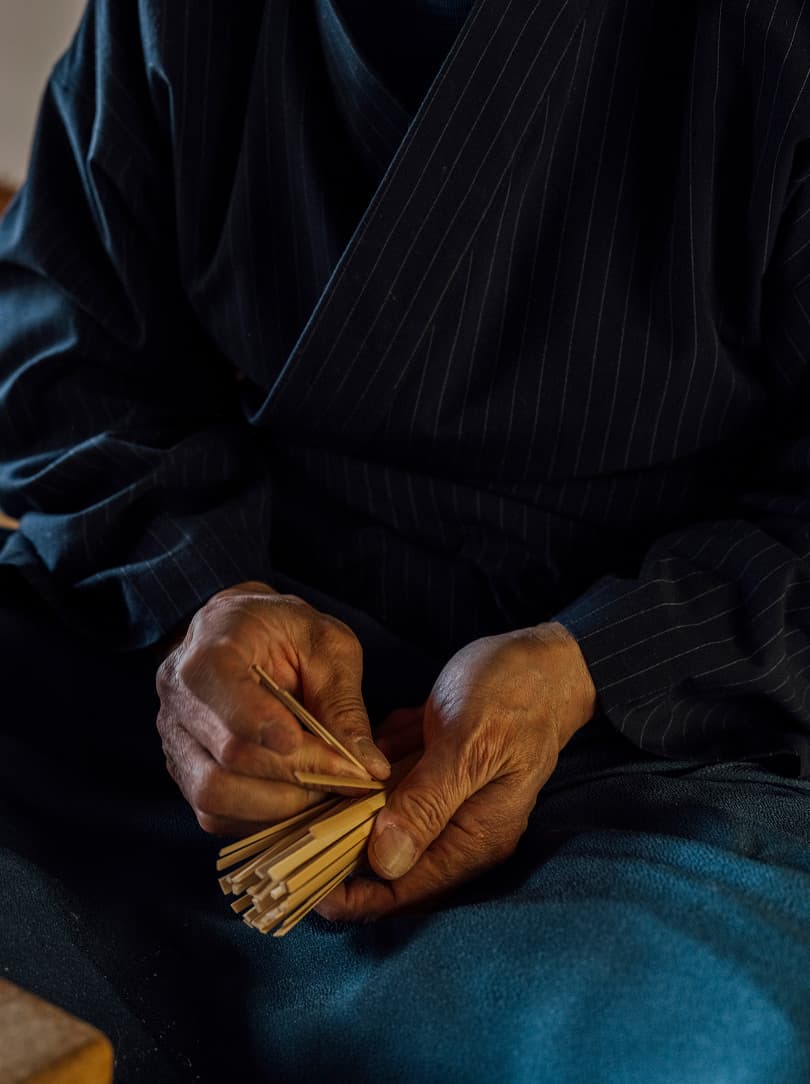
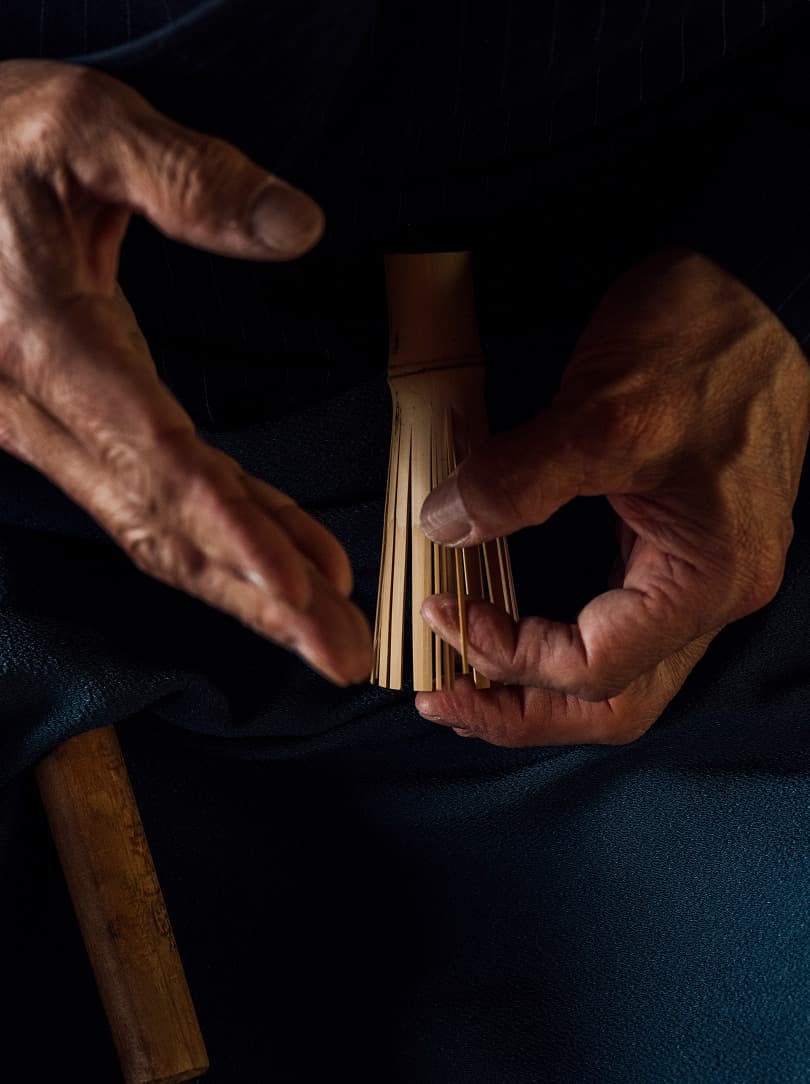
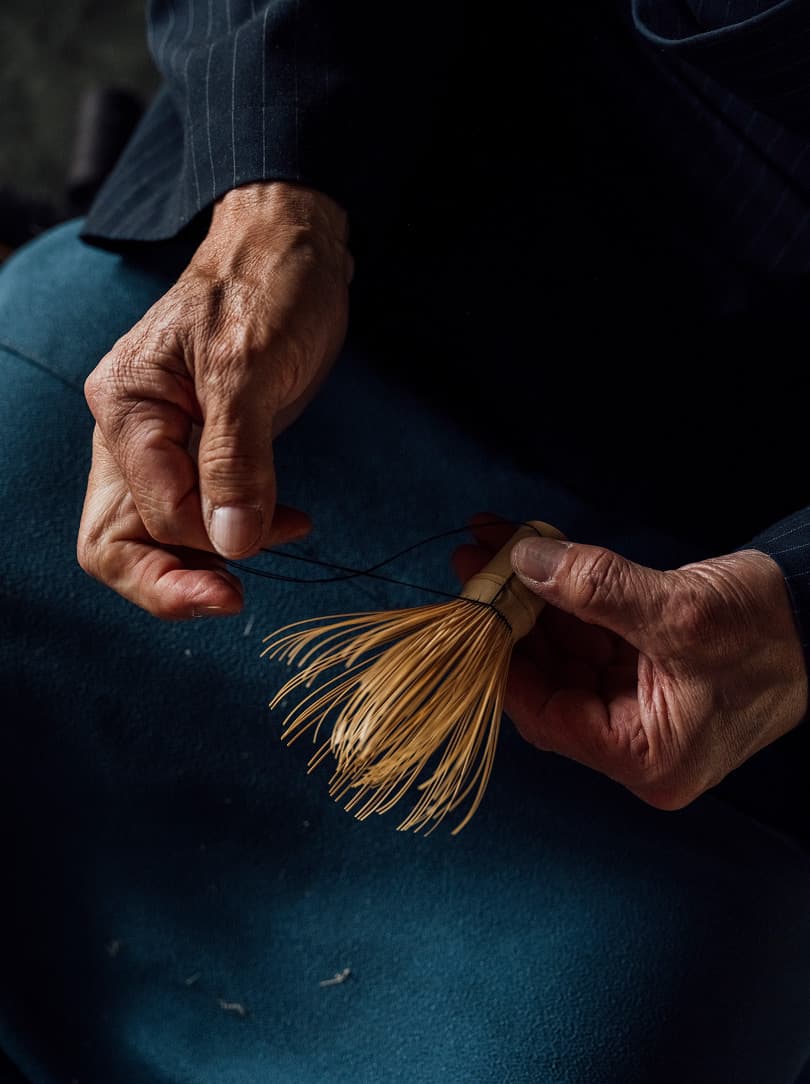
Once split, the whisk begins to take form. Through ‘shigoki’, the tines are rounded and shaped, their curvature refined from the inside using a series of small wooden forms. The movement is gentle but firm, drawing each tine into a clean, even arc. Then comes ‘ajikezuri’, the shaving of the tine tips to create the right degree of flexibility – also done purely by feel, and often considered the most difficult stage of all.
With his blade angled delicately, Tanimura-san scrapes each tip with almost imperceptible pressure, checking the softness between his fingers. The ends are softened, worked until they are fine enough to bend without breaking. Next comes ‘mentori’, removing the corners of each tine to prevent matcha from clinging to the surface. Tanimura-san’s blade skims along the edge, its sound barely audible, the form becoming more refined with each pass.
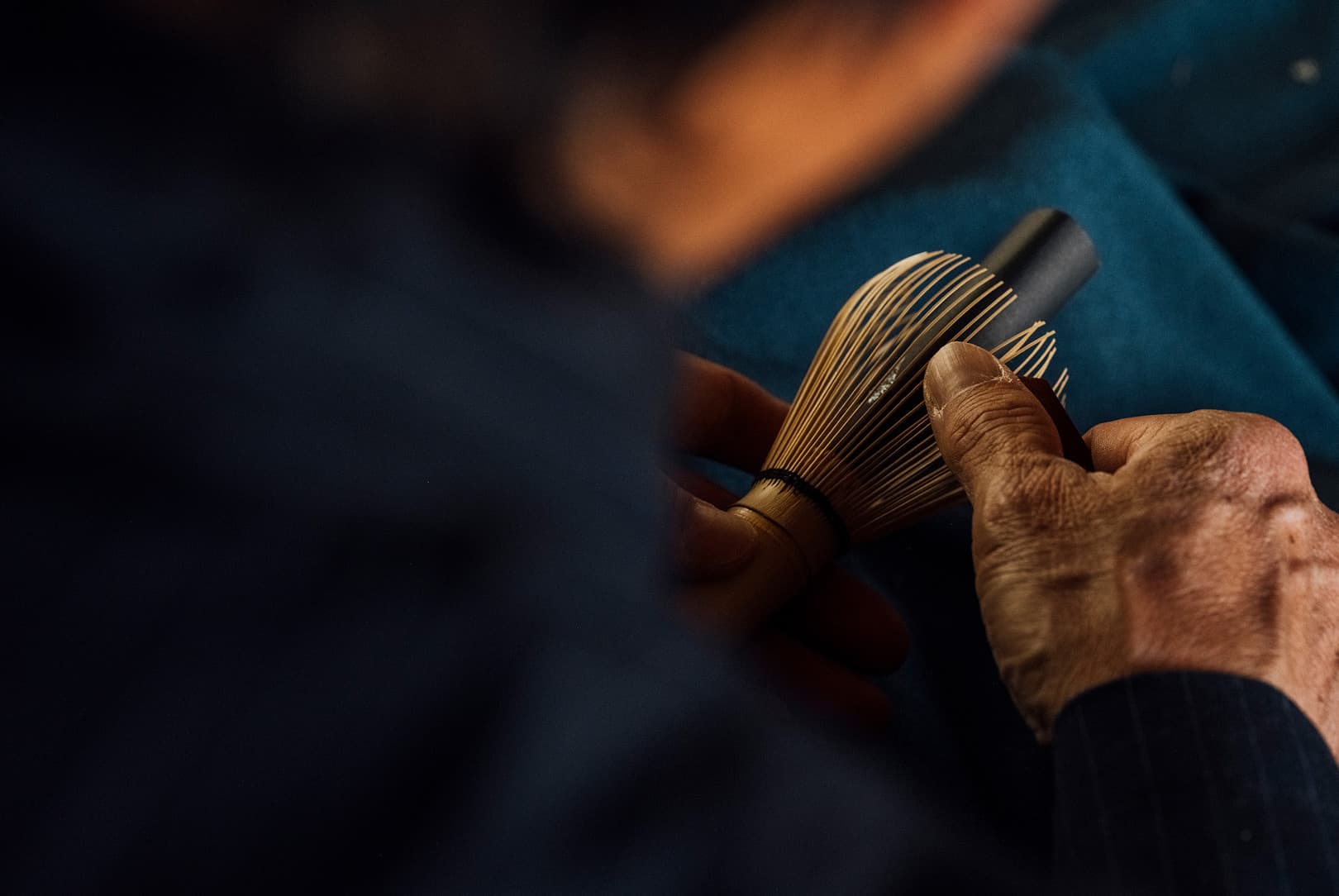
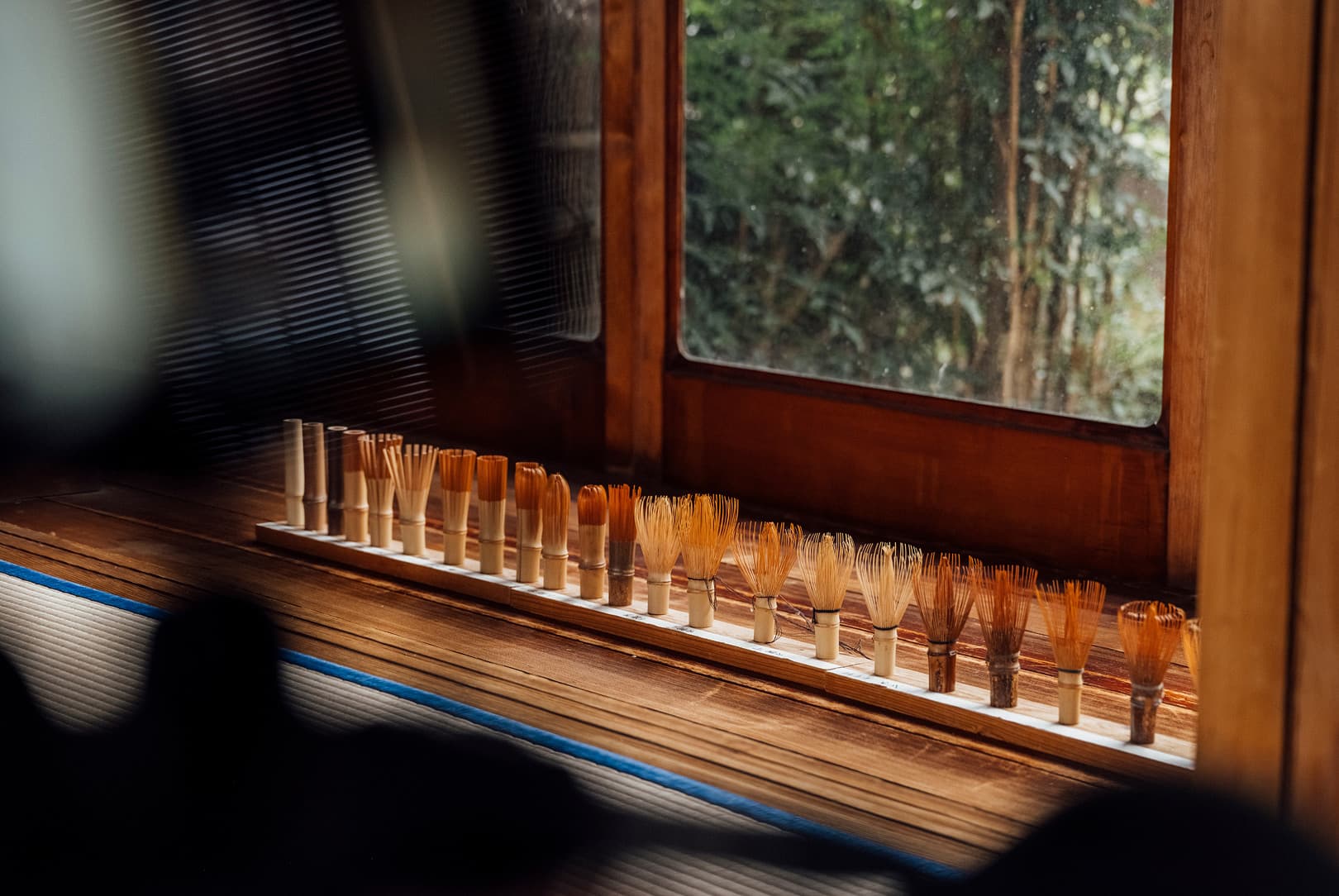
“A good chasen is easy to use,” he tells us. “That’s the most important thing. It has to be soft, but not too soft. It shouldn’t break. These things are in tension – it’s not easy to find the right balance.” We watch as he threads the whisk – ‘shitaami’, the opening weave that separates the outer tines from the inner. Then ‘uwaami’, black thread twice threaded in between each tine to hold the form. With a final twist, the familiar flared shape is revealed, resembling the form of a protea flower – the culmination of hundreds of small, precise decisions held in the curve of each tine.
In the tea ceremony, the chasen is intended to disappear into the motion of the hand when preparing matcha. Tanimura-san characterises its role as humble, its status lowly. “It’s almost at the bottom,” he says of its ranking. “But still, without a chasen, the tea ceremony can’t happen.”
Despite its diminutive ranking, each chasen is as unique as the piece of bamboo from which it is whittled. Its texture, curve and density vary depending on age, region and season. “There used to be people who specialised in selecting bamboo,” he tells us. “But they’re disappearing. Now, we have to find it ourselves.” Japan’s hachiku groves are also under threat – whole forests have withered from disease, their natural cycle destabilised by a warming climate. “If hachiku disappears, we have to wait 10 years for it to grow from scratch. There’s no quick substitute.”
“A good chasen is easy to use. That’s the most important thing. It has to be soft, but not too soft. These things are in tension – it’s not easy to find the right balance.”
TANGO TANIMURA
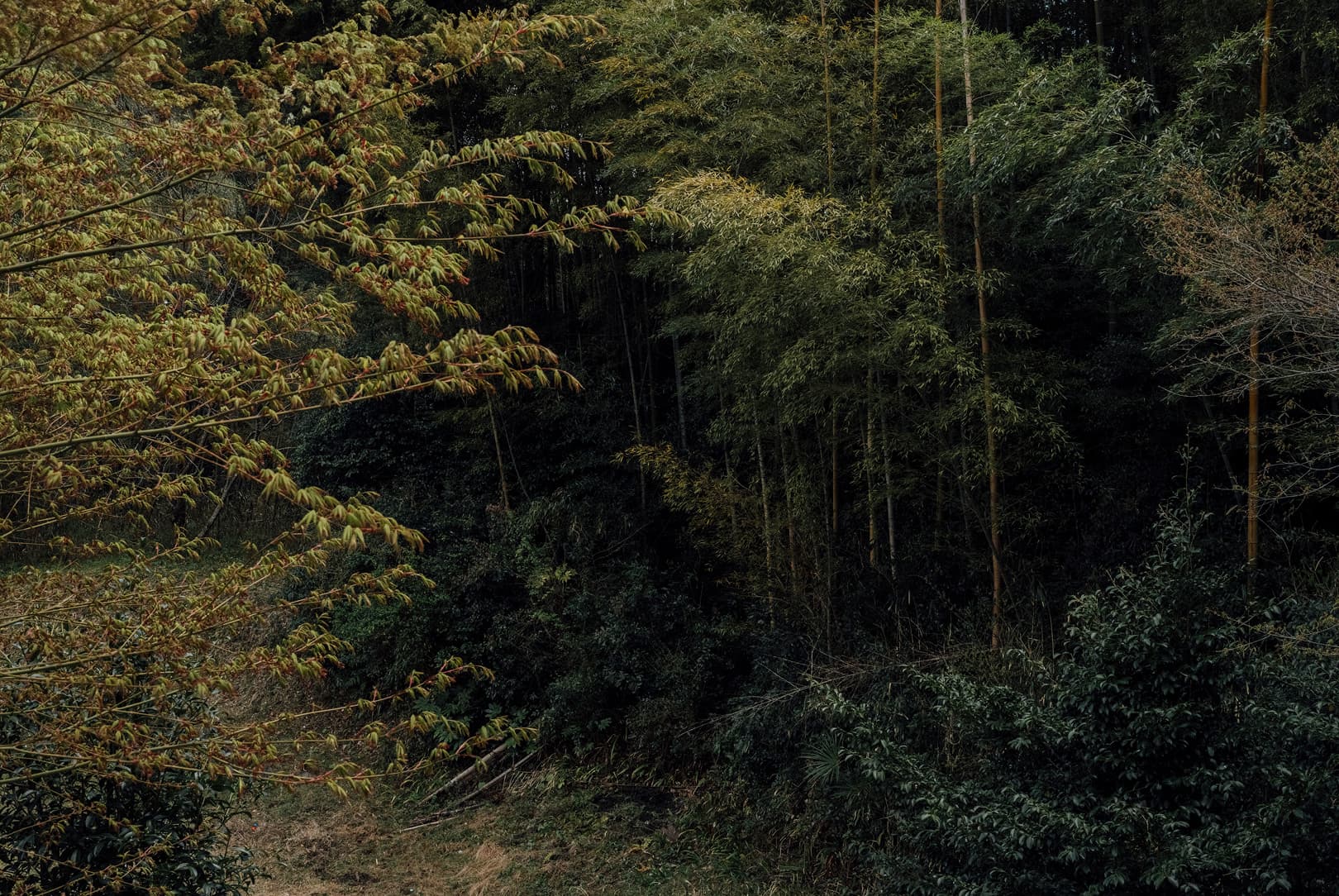
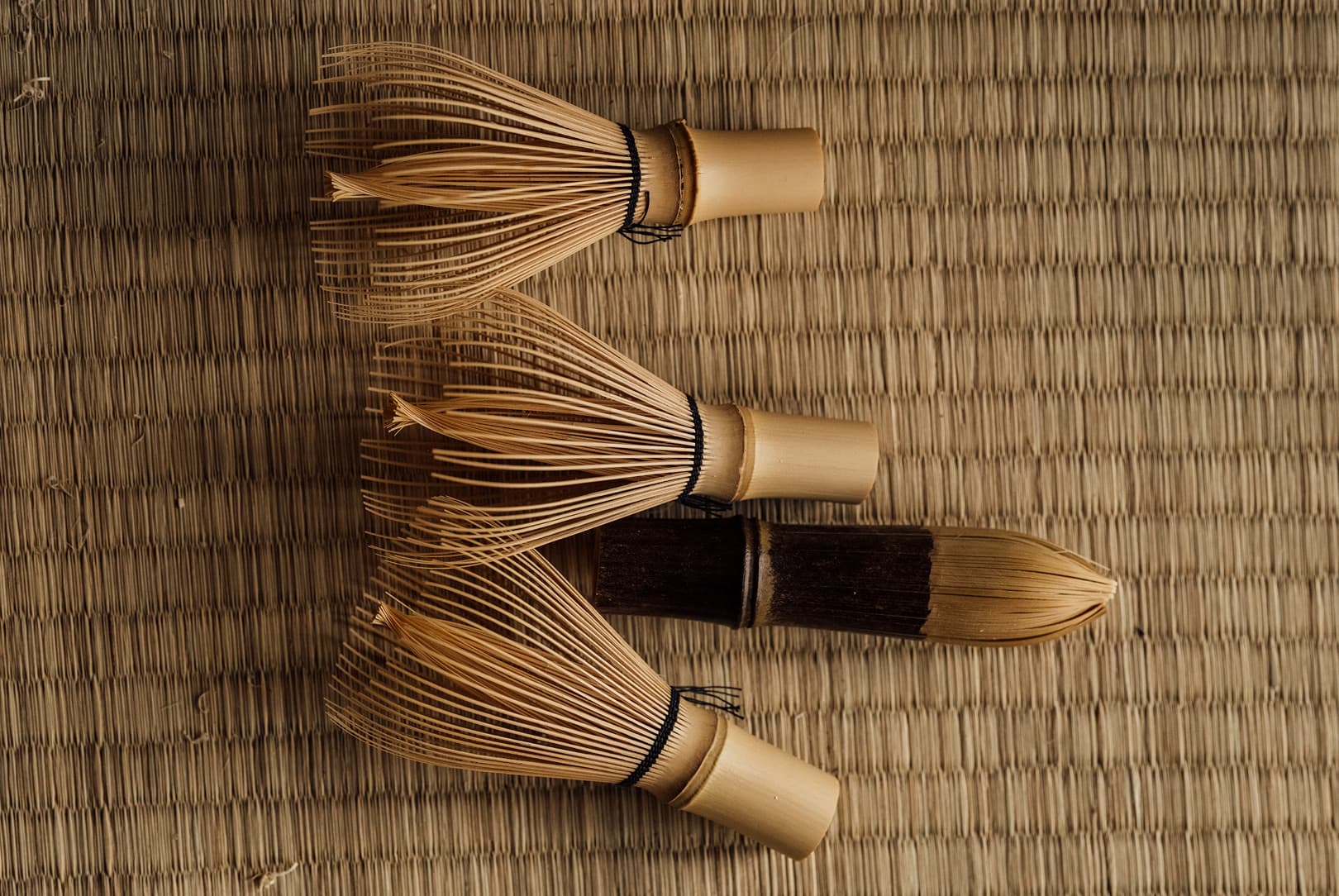
As well as the bamboo, the future of the craft itself is uncertain. Tanimura-san speaks plainly about this. “My father taught me,” he says. “But he never explained much. I learned by watching. That’s how it was done.” For centuries, the methods were fiercely protected – and passed only from father to son. “The chasen was invented about 1,500 years ago. At the time, how to make one was a tightly kept secret. It was never written down – only families like ours knew. Even today, we’re not sure if all the stories are real. It’s a kind of legend.”
Despite the historic honour of the shogun’s appointment, chasen-making is no longer a sustainable livelihood. “Even for those officially appointed, you can’t make a living just by making chasen,” he says. “Most of us also work in agriculture. Continuing this work feels like an obligation, because of the family history – because the shogun chose us. But some people stop. Maybe their children aren’t interested.”
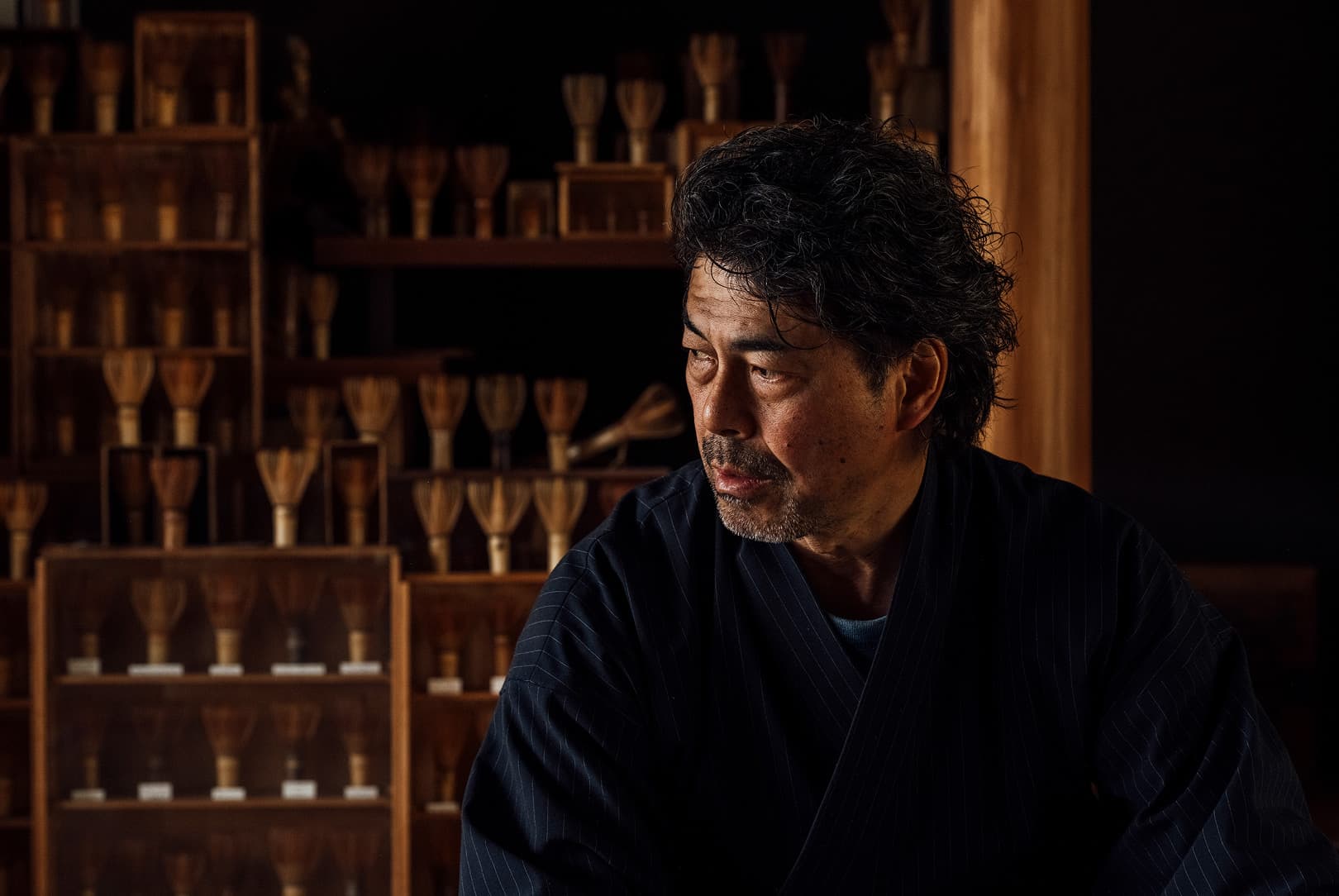
He shrugs slightly. “Chasen don’t last forever. After a year, they’re gone. That’s why we don’t aim for 100 per cent perfection. About 90 or 95 is enough. That last 5 per cent takes much more time – but the difference is small. What matters more is how much we can make.”
We hold a finished chasen in our hands; it feels almost weightless. “There’s a principle in craft called ‘yōnobi’,” he says. “It means something functions properly to achieve a result. But what makes it beautiful? I don’t decide that. The customer does. If someone sees it and thinks, ‘That’s beautiful,’ – then that’s what beauty is.”
As we prepare to leave, Tanimura-san shares a poignant reflection. “Sometimes I wonder if keeping it such a secret was the right decision. Because the information never spread, and now we’re the only ones left. If another region wanted to start, it would take a long time – to learn the techniques, to find the right bamboo. I’m still thinking about what should happen in future.” He stands slowly, brushing pale shavings from his knees, and walks with us through the garden toward the gate. The midday sun is high, casting long shadows on the stone path.
“Sometimes I wonder if keeping it such a secret was the right decision. Because the information never spread, and now we’re the only ones left. If another region wanted to start, it would take a long time – to learn the techniques, to find the right bamboo.”
TANGO TANIMURA
His words weigh heavy on us as we follow the winding road down the hillside, on our way to visit another master of his craft, ‘hishaku-shi’ Shizuo Okuda, among the last who still make the bamboo ladle by hand.
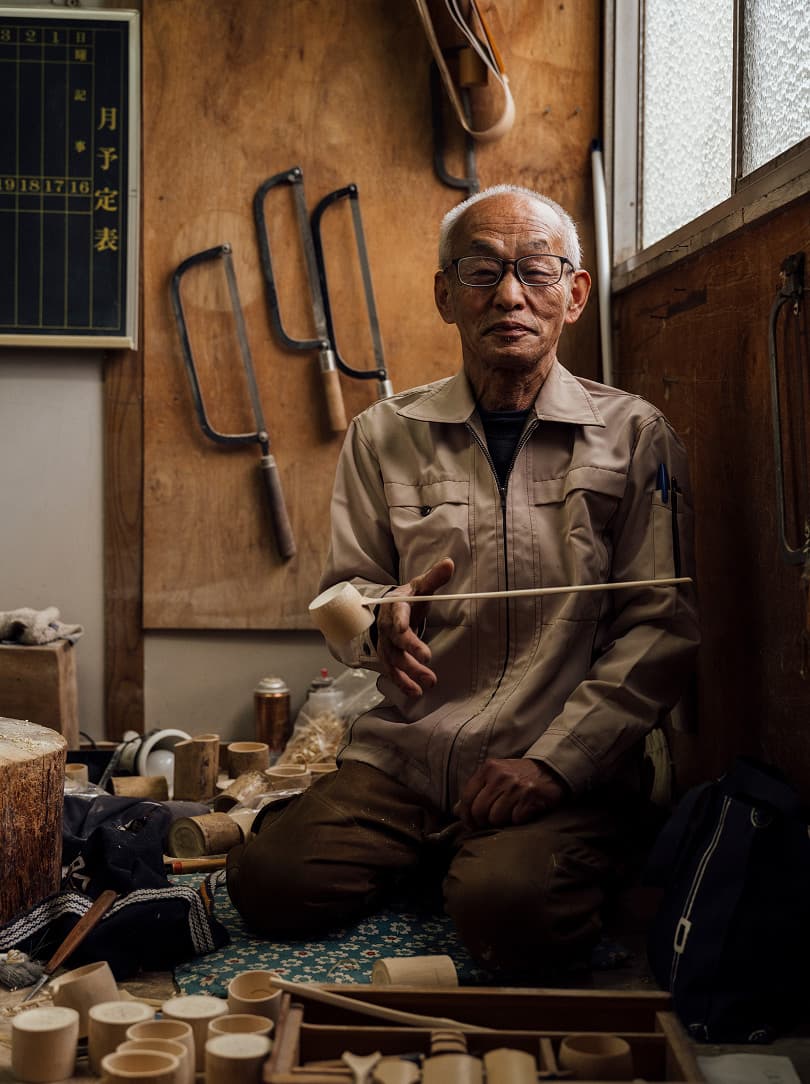
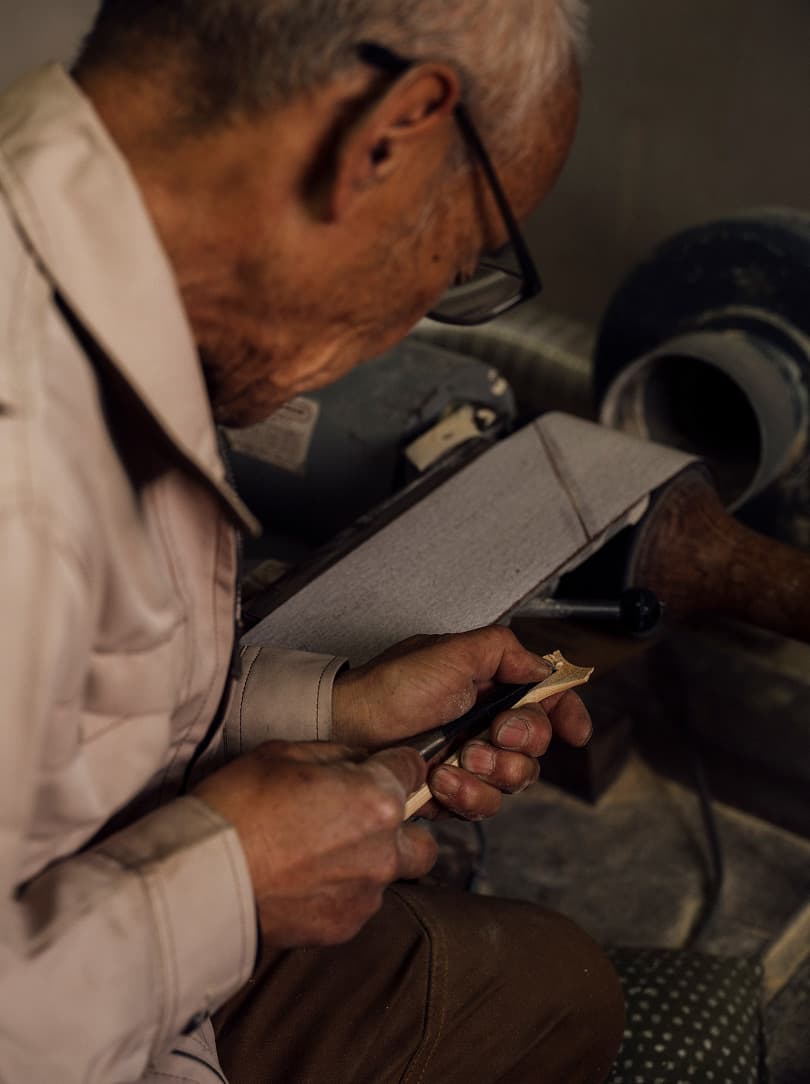
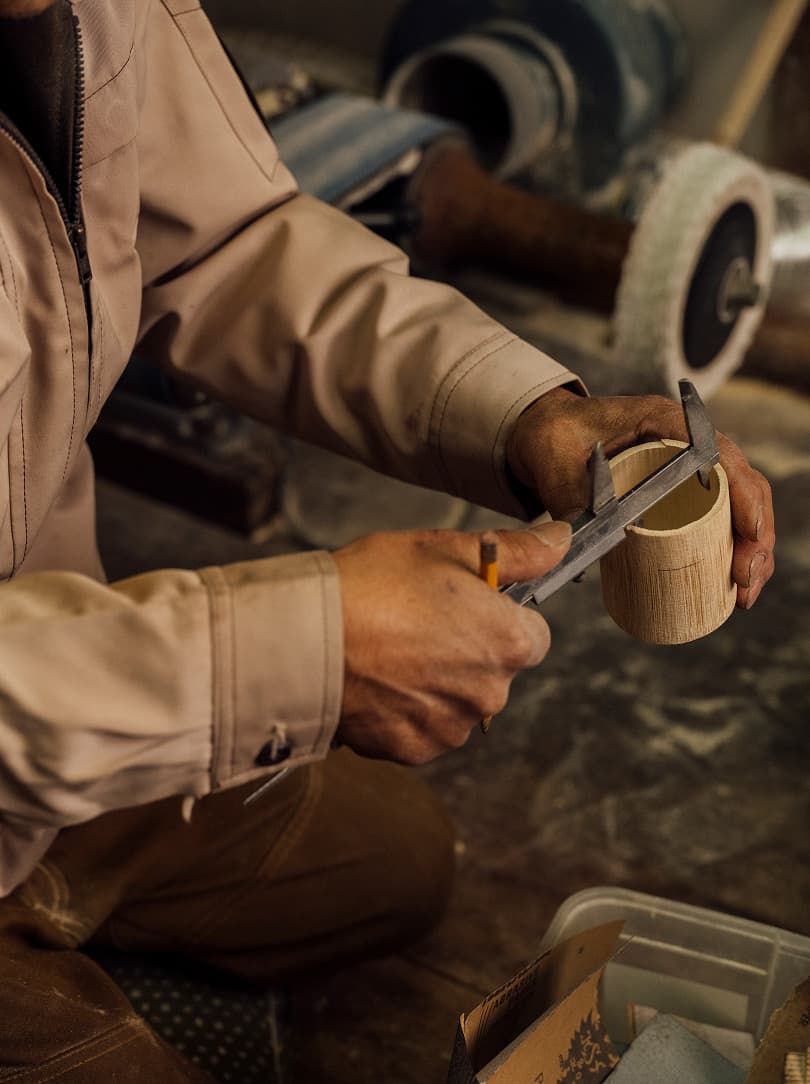
With its cylindrical scoop and long handle, the hishaku’s seemingly simple form belies its high status within the tea ceremony. Used to transfer water with precision, it frames the gestures of the host and helps set the rhythm of the ritual. Unlike other tools, it is rarely touched by guests and is handled by the host with particular reverence. Many are treated as an enduring work of art, imprinted with its creator’s distinct signature, and passed down through generations.
We arrive at our destination – a modest and muted two-storey home, tucked among similar residences on a steep suburban street. To one side, a workshop no larger than 2 square metres adjoins the upper floor, propped up on a wooden frame. Its unassuming façade belies the dignity of the craft carried out within.
Behind a tinted glass front door, we are welcomed into a treasure trove of bamboo implements – boxes of neatly wrapped bamboo utensils ready for gifting: chopsticks, whisks, tea scoops. Around them, handwritten labels, faded packaging, and curious ephemera: old matchboxes, kimono-adorned dolls, printed matter stacked in soft-edged piles. The walls are lined with grainy black-and-white photographs and traditional trinkets, every surface filled. Shoes left on the doormat, we’re guided upstairs to a first-floor workshop, where we pause at the entrance and watch as Okuda-san takes his place on the floor.
Surrounding him in this humble atelier are short lengths of bamboo, hand tools and spirals of pale shavings that gather in cloud-like piles. Dressed in a pale beige work jacket with a couple of ballpoint pens tucked into the sleeve pocket, Okuda-san begins to work without spectacle. His white hair is cropped close, and his glasses rest low on the bridge of his nose as he leans forward to inspect a hishaku ladle held at eye level.
Afternoon light filters in through a high window, illuminating the surface of his ground-level workblock, a cut tree stump smoothed with use. Behind him, shelves hold more bamboo stock and trays of sorted parts. Every tool – gouges, pencils, planing knives – is within easy reach. The workshop is set up to function as an extension of the body, arranged to support each movement in the process.

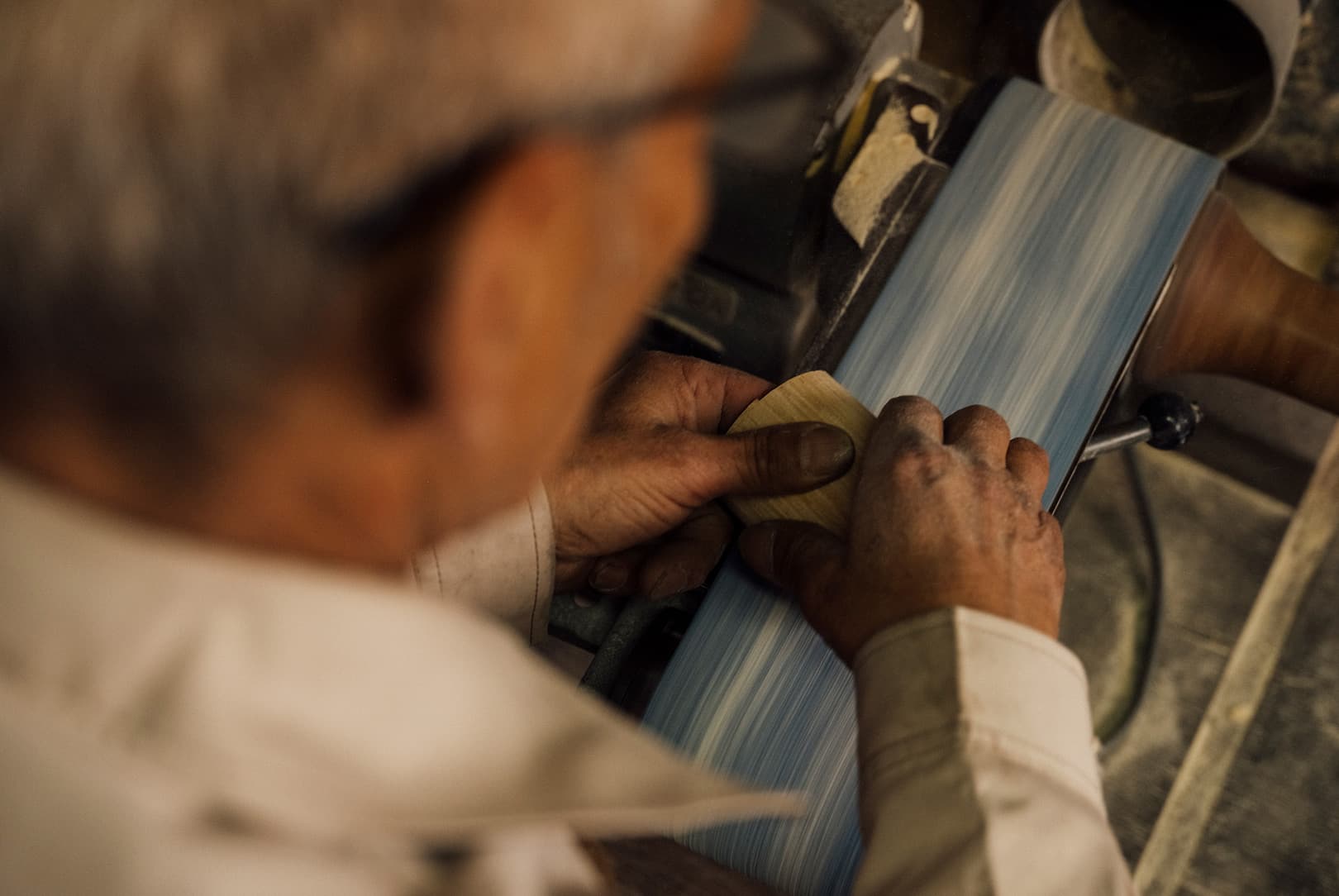
From the narrow doorframe, we watch his deft movements as he demonstrates the construction process from the raw material up. While hachiku bamboo lends itself well to the fine tines of the chasen, madake tends to be the preference for hishaku, thanks to its density, straight grain and fine texture. Only the most balanced, unblemished stalks are used. We watch as Okuda-san selects a length of bamboo and secures it upright on a worn wooden stump. With a practiced grip, he steadies it against a metal bracket and brings down a fine-toothed saw, slicing cleanly across the grain. The cut is smooth and confident; the material yielding under his hand.
“We watch as Okuda-san selects a length of bamboo and secures it upright on a worn wooden stump. With a practiced grip, he steadies it against a metal bracket and brings down a fine-toothed saw, slicing cleanly across the grain. The cut is smooth and confident; the material yielding under his hand.”
Once the base cylinder is cut, he turns it slowly in his fingers. The interior is carefully hollowed with a curved knife, the strokes even and angled, then refined with sandpaper and a spinning whetstone. As he works, curls of bamboo fall like paper ribbons. The surface is formed for weight and tactility as well as function – a balance between structure and feel. Next, he carves the handle. We watch intently as he tests the fit repeatedly, pairing it with the scoop and making fractional adjustments, shaving a little more from the tapered join each time. “The most difficult part of the process is joining the cup to the handle,” he says. “It has to fit perfectly. We just adjust it, little by little, until it holds.”
“The most difficult part of the process is joining the cup to the handle. It has to fit perfectly. We just adjust it, little by little, until it holds.”
SHIZUO OKUDA
Unlike mass-manufactured hishaku, which rely on glue to affix scoop to ladle, Okuda-san’s join is dry-fitted – locked into place through balance and exactness alone. When the two parts finally meet, he rests the completed ladle across his finger, watching for the teetering pause that signals its balance. “That’s what matters,” he tells us. “Not just if it works. But how it rests, how it looks. That’s the beauty.”
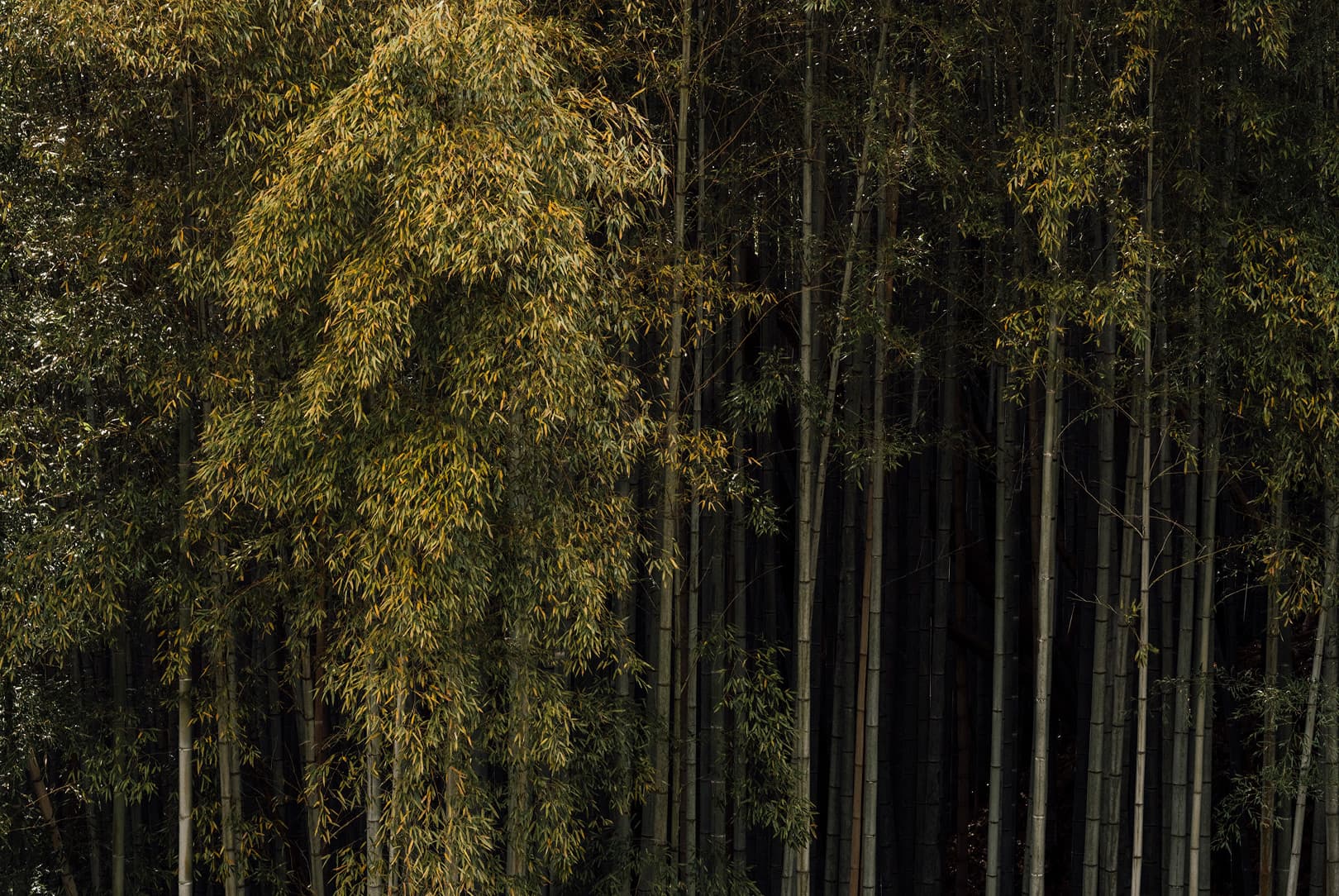
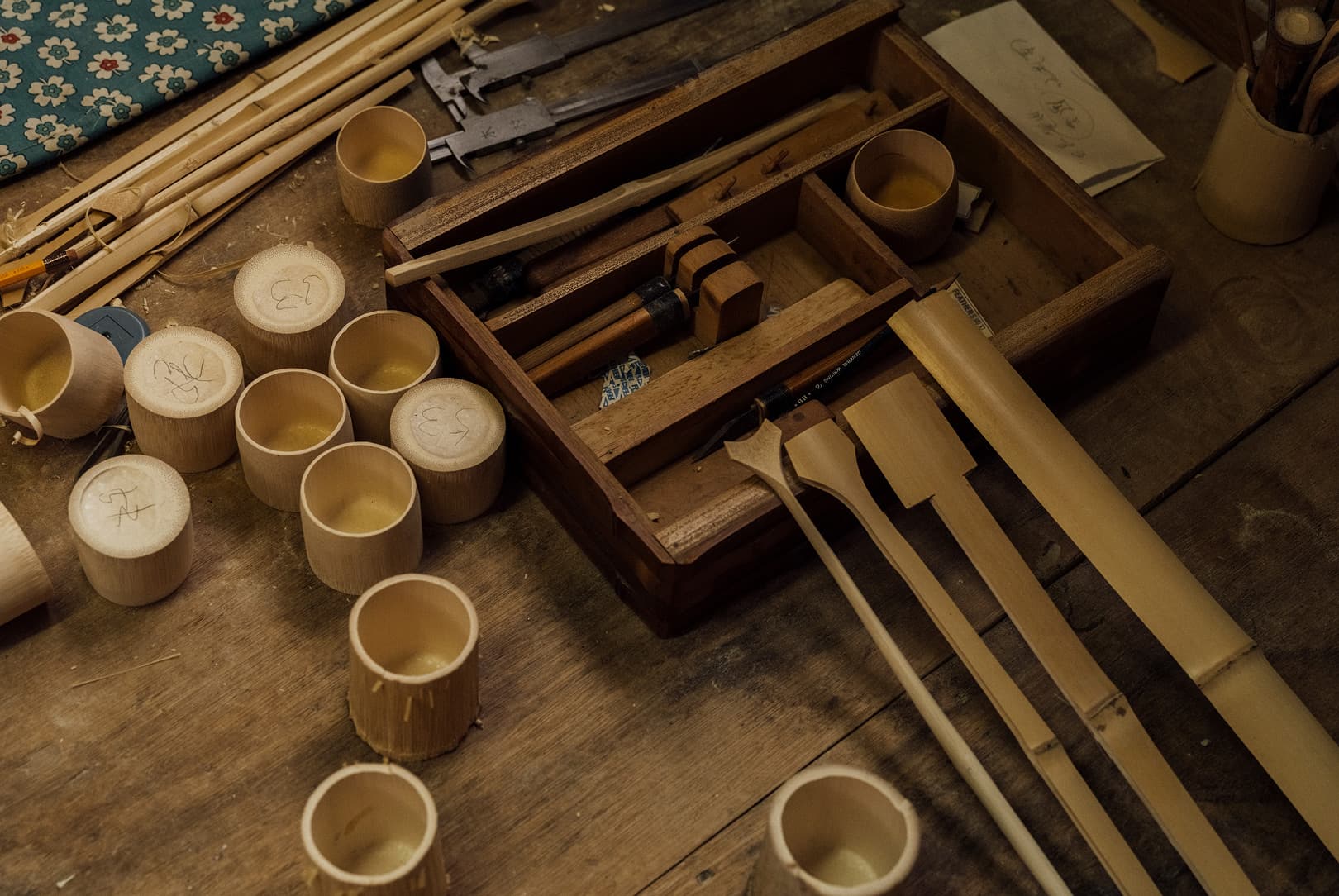
Having witnessed the hishaku’s creation from start to finish, we are invited to move to the office alcove, where Okuda-san shares more on the object of his life’s work over small cups of steaming hōjicha. At 76, he speaks with disarming charm, the well-worn lines of his face settling easily into a smile.
Like many aspects of the tea ceremony, the hishaku is notable for its seasonal variance, he tells us. In summer, the pot is smaller, the scoop shallower. In winter, it deepens to preserve warmth. These differences define both the ladle’s construction and its use. “Everything is connected to the seasons,” Okuda-san says. “Even the cutting method changes depending on whether we’re creating for summer or winter.” The ceremonial gestures change, too: “In winter, the ladle rests upside-down on the pot after use. In summer, it faces up.”
Despite its rarefied status – more ceremonial object than consumer product – handcrafted hishaku is attracting more wholesale demand. “We can’t keep up,” Okuda-san says, motioning to the slips of paper tacked round the room. Orders arrive faster than he can fill them. “There used to be more of us,” he adds. “But many were older and have passed away.” He has been making hishaku for 60 years, 10 of which were spent in training. His own path wasn’t straightforward. “My father taught me,” he says. “But there was a time when it was very hard to live as an artisan. I left, did other work. But I came back.” Today, the work is steady and meaningful. “This is the best period of my life,” he says. “Many people thank me, tell me they’re very satisfied. It’s rare to be recognised like this.”
“This is the best period of my life,” he says. “Many people thank me, tell me they’re very satisfied. It’s rare to be recognised like this.”
SHIZUO OKUDA
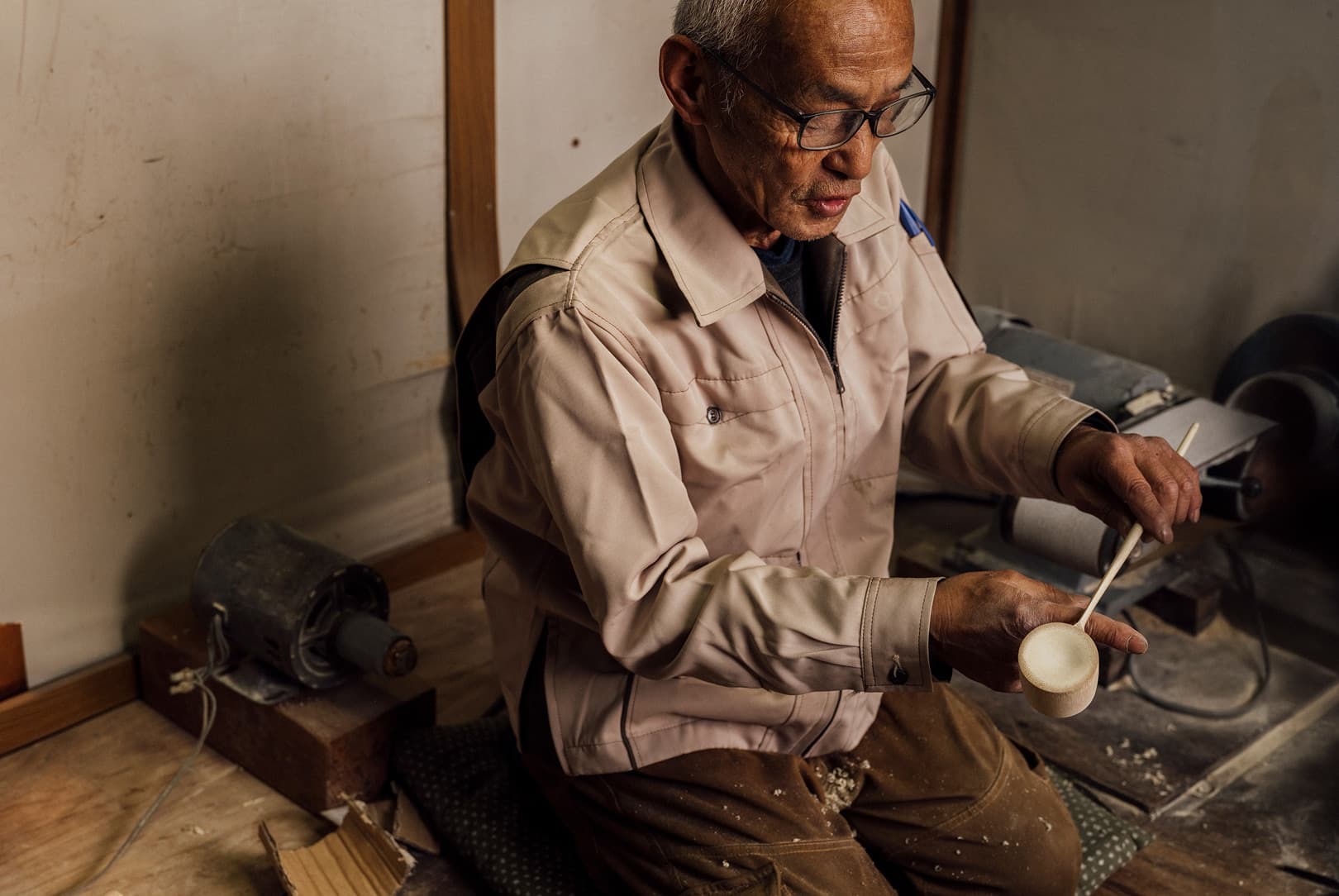
The resurgence is one with an uncertain trajectory, however. “In 10 or 20 years, I don’t know who will carry it on. It’s very difficult to continue.” The craft demands time and stamina: 10 years just to become competent. “Young people go to university; they get jobs in companies. They’re not sure if they’ll have the right technique. And it takes a long time – it’s a hard path.” His tone is calm, belying the emotional implications of the reality he is facing. “Some people are motivated,” he says. “They’re interested in Japanese culture. But they don’t know how to begin. That’s the important part – how to find the way in.”
The weight of this fragility is easy to miss when presented with a cup of freshly prepared matcha. Its striking surface invites easy distraction: the vegetal-green hue, the froth, the claims of purity and calm. The tools used to make it can, to the unassuming, seem incidental. Yet each arises from a discipline so deeply embodied it no longer announces itself. It is borne of years of daily gestures stored in the hand and the eye, sustained through the repetition of a life’s work.
With few successors in sight, the line of artisans who carry this knowledge is wearing thin – and centuries of expertise are drifting closer to disappearance. The ability to recognise a hand-split tine or the balance of a perfectly fitted ladle. The knowledge of how something should feel in the hand, or how to adjust it with the season. Chanoyu continues to be performed, but the layers that once gave it depth – the histories, decisions, and touch of the maker – are beginning to thin.
“In 10 or 20 years, I don’t know who will carry it on. Young people go to university; they get jobs in companies. They’re not sure if they’ll have the right technique. And it takes a long time – it’s a hard path.”
SHIZUO OKUDA
As we depart Takayama for Kyoto, the broad sky sinking into pale pastels and lights flickering on across the darkening mountains behind us, the gravitas of what we have witnessed and heard today settles in. Beyond the surface appeal of its verdant gloss, matcha invites us to enter a different timescale. It encapsulates everything: shaded fields, stone-ground leaves, the deft motions of tools honed over decades, passed through generations in closely held secrets – today, to the chagrin of those whose successors remain in question.
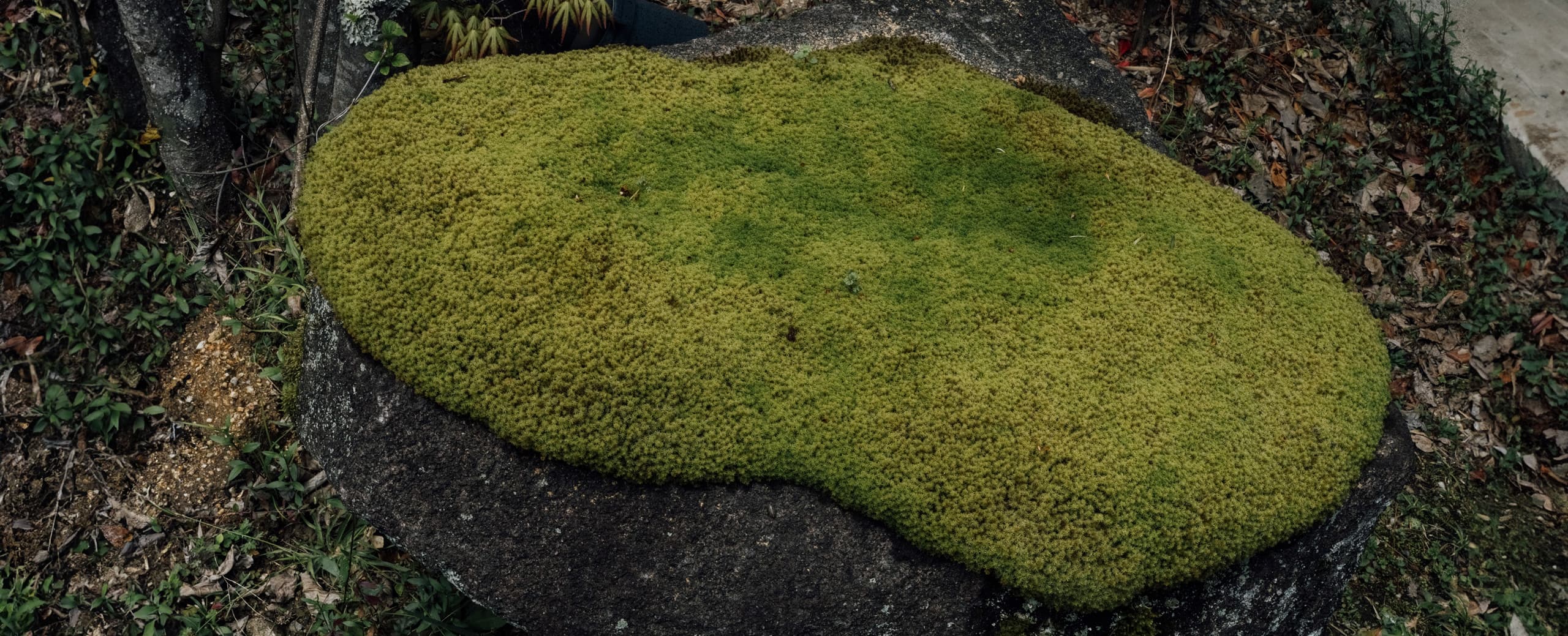
Appreciating the real depth of matcha and the traditions that shroud it asks something of us – patience, discernment, a recognition of what has been brought to the table through the hands of master artisans. It impresses on us the weight of what now risks slipping away – and sharpens our understanding of what true craft entails: that nothing of value can be rushed, nor imitated.
Discover our handmade matcha tools, from handcrafted whisks and ladles to our own AGOBAY ceremonial-grade matcha from Kyoto. Each item is crafted for quiet preparation, mindful sipping, and a reminder of what’s worth preserving.
